Subaru WRX review and buyer's guide
The performance car icon now has a Sportwagon. Let’s look at the fast family-friendly performance sedan and consider if you need the big boot option. Here’s what you need to know…
The Subaru WRX is the epitome of breathtaking performance packaged with the sensibility of a five-seat family car, for a relatively affordable price that shames European sports car brands.
But is it just another brawling street fighter or is the WRX more grown-up and more attuned to the trappings of family life? Can it walk the line and do both?
Happily, a WRX today is not the same ball-tearing psychopath it used to be. It has an extensive array of safety aids to keep you out of jail and with an intact licence. But it’s also comfortable, and even comes with that dynamic cornering stability you remember from your youth, courtesy of the all-wheel driveline. Only now, there’s room for a twin stroller.
Thankfully, the Levorg which died off a few years ago, is now back as the WRX Sportwagon, as it should always have been named.
Some people lamented the demise of the proper wagon, but Subaru has refused to let it die with this generation of WRX. It’s not some deformed hatchback like the Golf, and not a front-drive only Mazda 6 which is now defunct in 2025. This generation of WRX suggests Subaru intends to keep making a wagon.
The main contention with the new WRX sedan and Sportwagon is whether it can play both the mid-life crisis sports car and do all the practical stuff required of a family five-seater, with that convincingly big boot.
You can download the Subaru WRX brochure here >> if you’re having trouble sleeping.
If you’re looking for a desirable, special edition WRX, in the context of not having an STi version of this generation WRX, you might want to check out the Spec B.
Yes, the Spec B is back, as a hardened, more driver-focussed derivative of the top-spec WRX tS.
Headline features include 19-inch alloy wheels, Brembo brakes and Recaro sports bucket seats. These are all important items when hotting up a WRX from the factory. There’s an optional “STI performance mufflers” which will be a must-tick box on the order sheet if you want to do this right.
Not forgetting, of course, that enormous surfboard rear wing for all that unobtainable downforce you won’t be able to generate at speeds below about 130km/h on Australian roads.
But the single most important aspect of the WRX tS Spec-B is the six-speed manual transmission… That’s right. A clutch pedal returns.
The galling news is that this is, going to be a $65,000 Subaru WRX. But for the died-in-the-wool blue-blooded Subie nuts, it’ll be worth every cent.
FEATURES & PRICING
Let’s start with the Sportwagon. Scroll down if you’re only here for the sedan.
There are three model grades, the base model which doesn’t get its own designation (in the same way Hyundai has dropped any designation for the likes of Kona, Tucson and Santa Fe). Then there’s the ‘GT’, and then the ‘tS’ which gets the adjustable dampers.
Choosing the wagon over the sedan will cost you about $5000 more and adds 28 more kilograms, but obviously you substantially increase your potential stowage capacity from 414 litres of volume to 492 with the rear seats up - that’s an 18 percent increase. You get 909 litres with those rear seats down, or according to Subaru, 1430 litres up to the roof.
Compared with its direct rivals, the Mazda 6 (which is potentially not long for this world), the Volkswagen Golf (which only has two model grades - the overpriced R for boy-racers, or the poverty pack 110TSI Lifeline) and the Skoda Octavia (a stripped out Golf with questionable reliability, quality and customer support), the WRX absolutely feels like the most dependable option here. We’ll discuss the rivals later.
The important numbers on Sportwagon are more crucially compared with its bigger sister, the equally very fast Outback XT >>.
Obviously you’re considering the wagon because you want that added layer of functionality to the impressive performance combination of the AWD system and the 2.4 turbo-Boxer engine. You’re possibly also a dad who’s decided you’ve had enough of SUVs and want to revisit your youth. That’s allowed, and also it’s perfectly understandable.
So here are the numbers you need to justify the WRX Sportwagon over an SUV.
You do not buy the WRX Sportwagon to simply and only mosey along from home to the office - you buy one to punt en route to wherever your family is forcing you to be on your weekends and holidays. And ladies, that includes you. This is an inclusive show, and I know there are many Tiffanies out there who enjoy putting their foot down, much to the curious attraction of their male counterparts.
That 2.4-litre, 95 RON premium-petrol Boxer engine, with direct injection, turbocharger and intercooler, is bigger than the Levorg’s 2.0-litre unit which made 197kW at 5600 revs, to 202 at the same RPM.
So not only does WRX Sportwagon go better and harder than the old Levorg, it’s now an even sharper value proposition compared with other hot car-based wagons you might be considering.
Let’s look at the WRX sedan now.
There are four model grades in the sedan version, the base model ‘WRX AWD’, the ‘Sport’, then the ‘RS’ and finally the ‘tS’ which again has the adjustable sports suspension. Both body styles use the same Subaru Global Platform.
Sedan costs range from $50,000 (base manual), to $62,800 for ‘tS’ auto; Sportwagon ranges from $55,600 (base auto-only) to $64,000 for ‘tS’ auto-only. Prices may vary depending on dealer pricing and yes, they have crept up since this whole new model launched in 2022 - along with literally everything else.
What’s impressive here is the sheer value packaged into the base model - which you can also have as a 6-speed manual. That’s right. With a clutch pedal.
Here are the key features and equipment.
WRX base model (manual) offers:
Rain-sensing wipers, auto-down windows (x4)
Proxy smartkey W/ push-button ignition
Dual-zone climate control (no rear vents)
EyeSight ‘driver assistance’:
Emergency Lane Keep Assist
Lane centring & sway warning
Lane departure prevention & warning
Lead vehicle start alert
Auto emergency steering
Speed sign recognition
Airbags include driver’s knee
Manual cable handbrake, cloth seat trim, manual seat adjustment
DAB+ digital radio, wireless Apple CarPlay & Android Auto, 6-speaker stereo system
11.6-inch infotainment touchscreen, 1 x USB-A & 1 x USB-C charging ports
Reversing camera, blindspot detection, rear cross-traffic alert & lane change assist
LED headlights (auto-levelling, steering-responsive, auto-on/off), daytime running lights, fog lights; high beam assist
Adaptive cruise control
18-inch alloy wheels (half-size spare), tyre pressure monitoring
Heated electric-folding electric mirrors, privacy glass rear-passenger windows & back window
Twin exhaust tailpipes, sports pedals, rear spoiler
New additions to the base model WRX from 2025 include:
Distraction warning
Drowsiness warning
Facial recognition
Climate control (last used settings)
MID display (last used settings)
New ‘Emergency Driving Stop System’
Interior trim: roof and pillar headlining in Sportswagon variants is now black, to match sedan interior
Paint colours: ‘Galaxy Purple Pearl’ replaces ‘Solar Orange Pearl’
Now from here you can either go to the RS manual if you want to stick to DIY gearchanges, or the next model grade is the ‘Sport’ with the automatic CVT transmission.
WRX ‘Sport’ adds:
EyeSight driver assistance adds:
Pre-collision throttle-cut
‘Intelligent’ speed limiter
Dual-zone climate rear vents
Auto stop-start ignition
Electric park brake, auto vehicle hold
rear parking sensors, reverse emergency braking
Drive mode selection: ‘Intelligent’ (I), ‘Sport’ (S) or ‘Sport Sharp’ (S#)
Paddleshift & ‘manual’ mode selection
And for $2300 that’s it really, for the ‘Sport’. Rear air vents, rear sensors and auto-braking, and the sport modes for the transmission.
Another $3200 for the manual ‘RS’ and this is where the best value can be had with WRX. There is one drawback though…
WRX ‘RS’ manual adds:
Satnav, CD player
10 Harman Kardon speakers, subwoofer and amplifier
Rear USB-A & USB-C charging ports (1 of each)
Driver monitoring:
Distraction warning
Drowsiness warning
Facial recognition
Climate control memory setting
Front camera, side camera
Sunroof, auto-dimming rearview mirror
Front wiper de-icing, LED puddle lamps, ambient interior lighting
‘Ultrasuede’ seats, 8-way electric driver & front passenger seat adjustment (incl. lumbar), heated front and rear seats
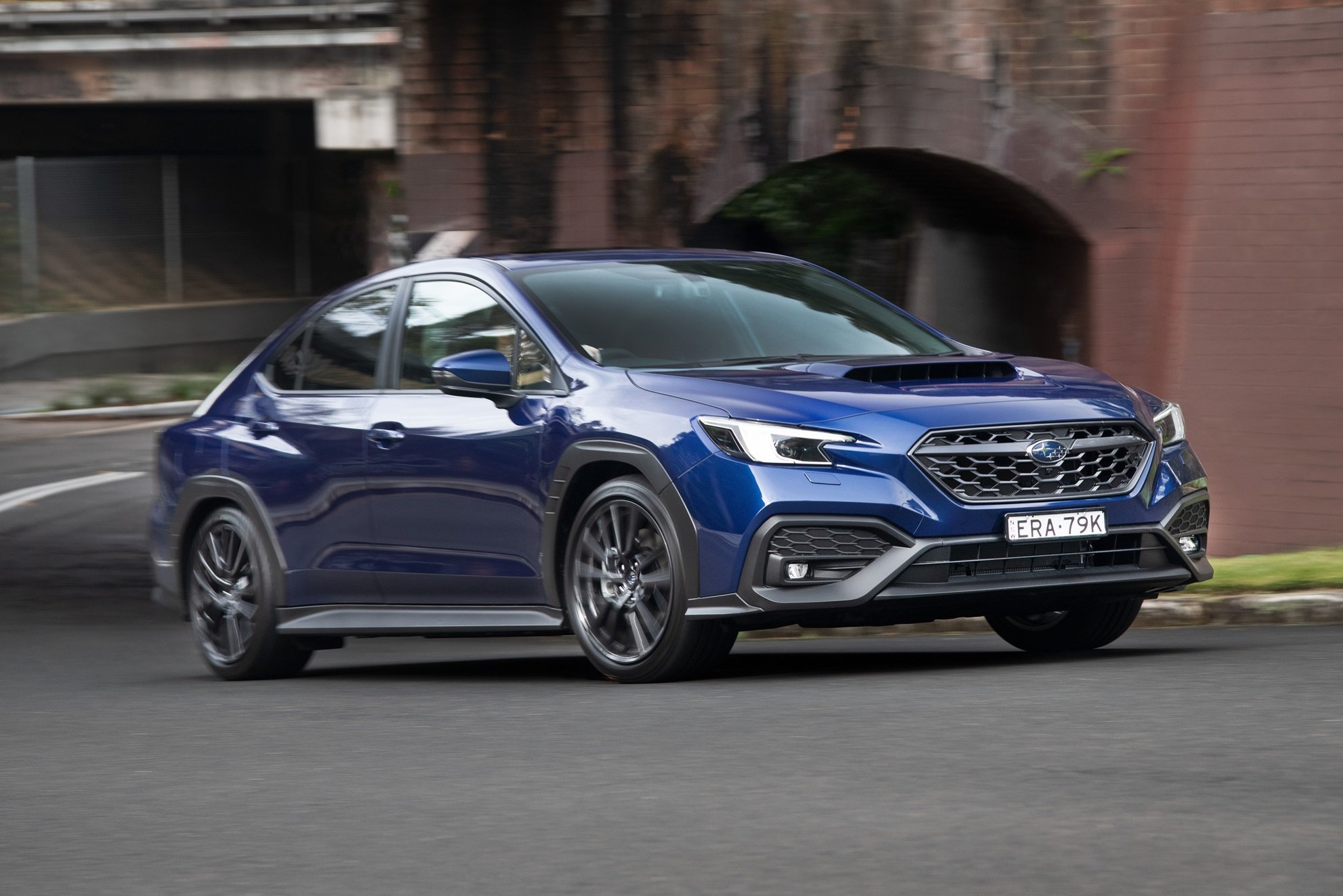
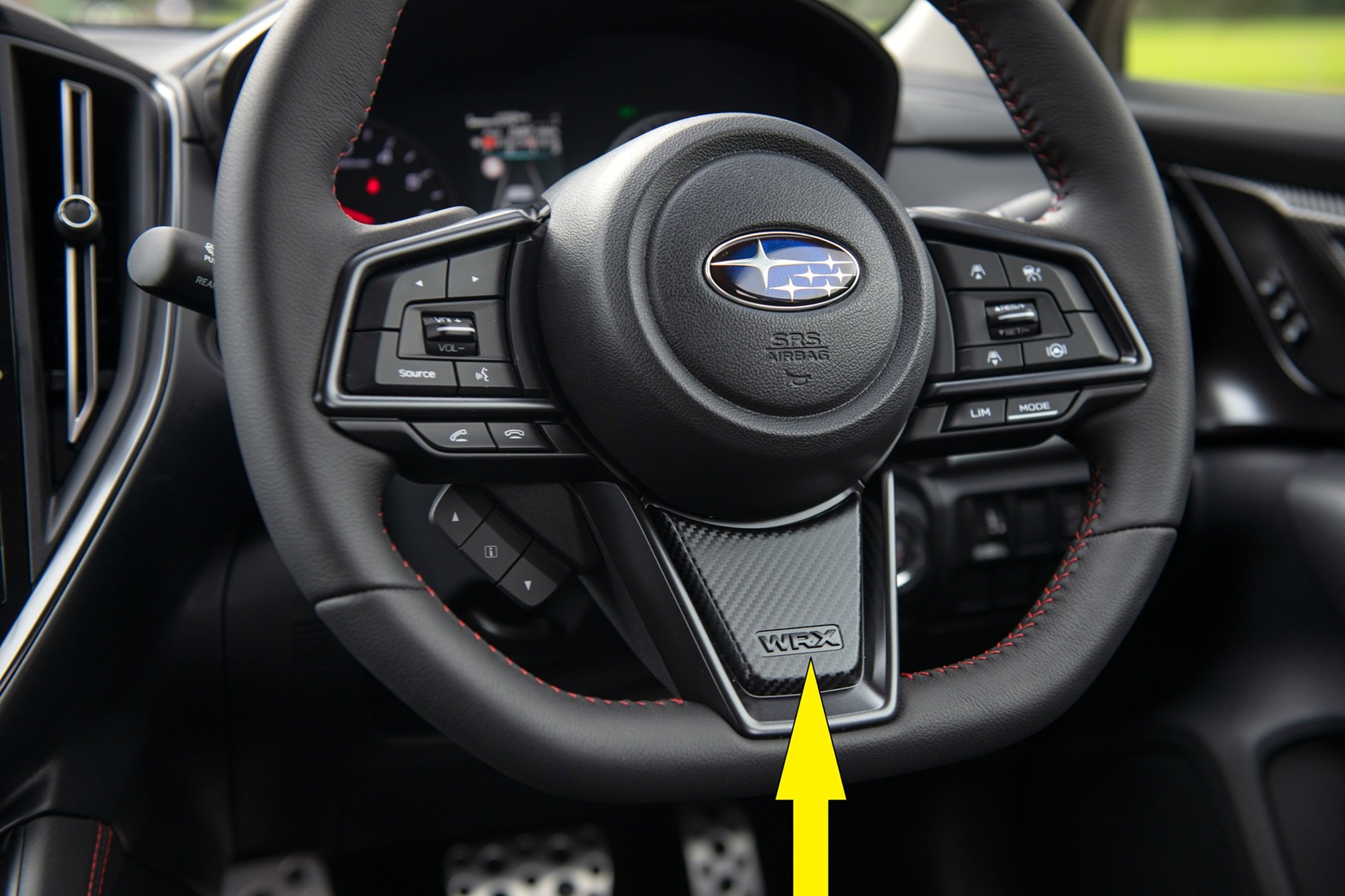


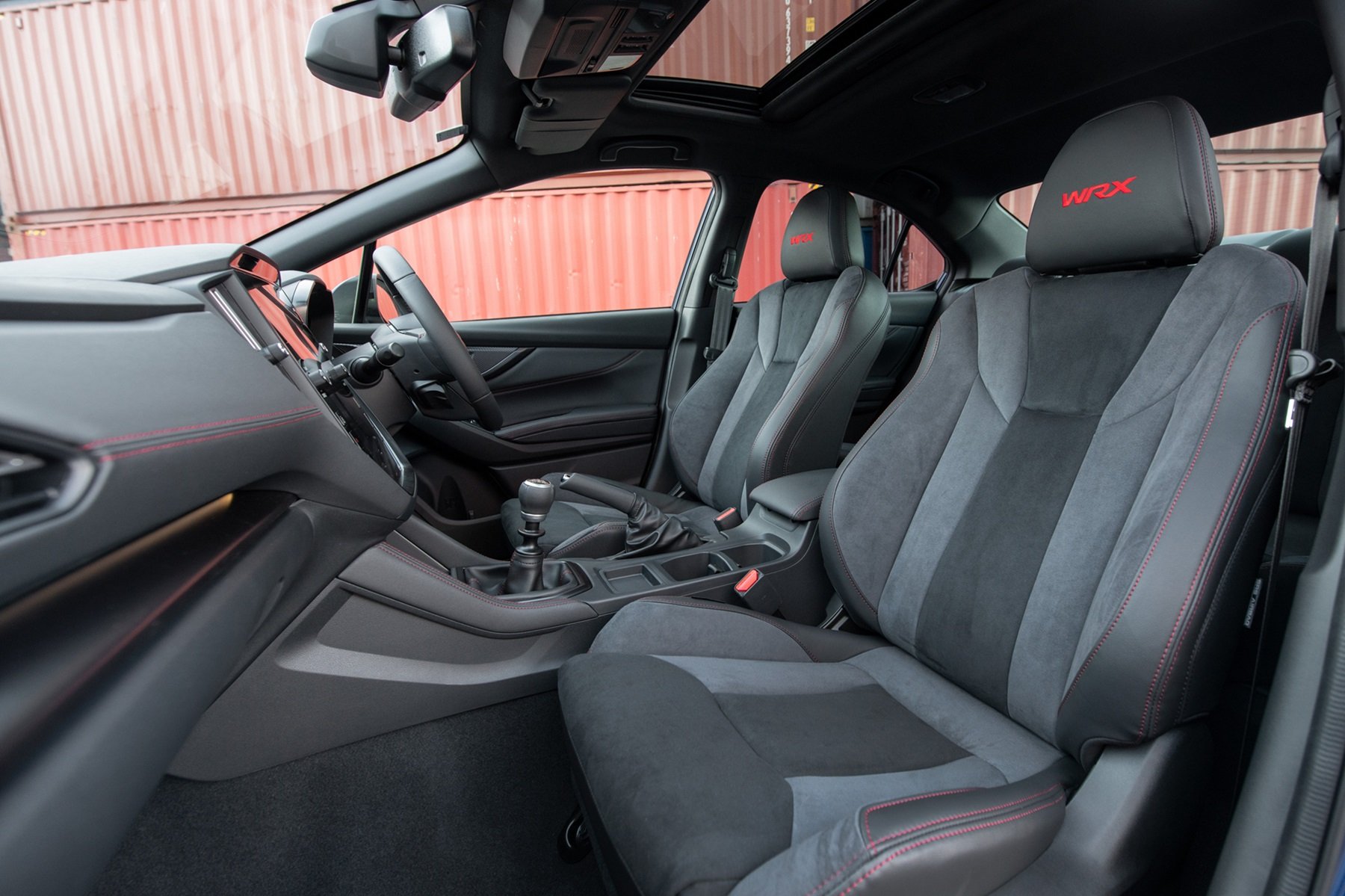
However, it’s a bit annoying the RS loses the rear air vents for the kids and the rear parking sensors they activated for the ‘Sport’ with CVT - the sensors are there and functioning for the rear cross-traffic alert and blindspot detection, Subaru just wants more money to turn them on.
Fortunately, it’s not a particularly big cabin to heat up or cool down, and the price increase isn’t that big that you should feel ripped off. And hey, fewer things binging and bonging at you is usually a good thing with modern cars.
The ‘RS Sport’ is essentially the RS but with the CVT transmission and paddleshifters. For another $2600 roughly, they’ve also chucked in:
Auto door mirror adjustment w/ auto-folding, auto driver’s seat adjustment
Door mirror position memory, passenger-side auto-dipping mirror
Driver’s seat position memory
Honestly, it’s hard to understand why you would bother with the RS Sport. There’s nothing here of particular significance and it doesn’t really entice you to spend a bit more because you’re not really getting much. The door mirrors and seats do a few more things. Whoop-di-doo.
The problem here is that RS Sport makes the flagship WRX model, the ‘tS’, just that extra step harder to justify because all you’re really getting is the adjustable suspension profiles (which is part of the ‘drive mode selection’ below).

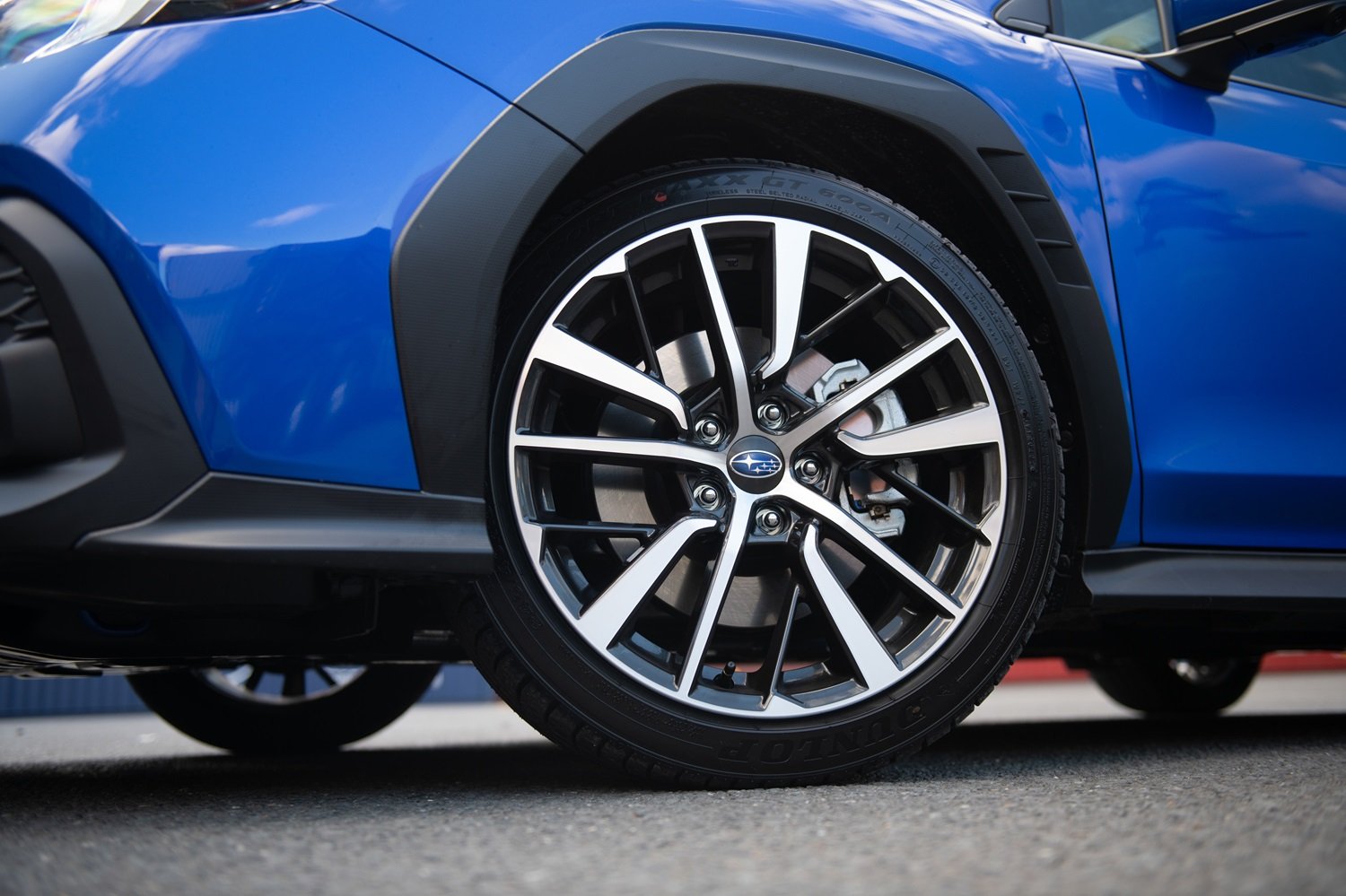
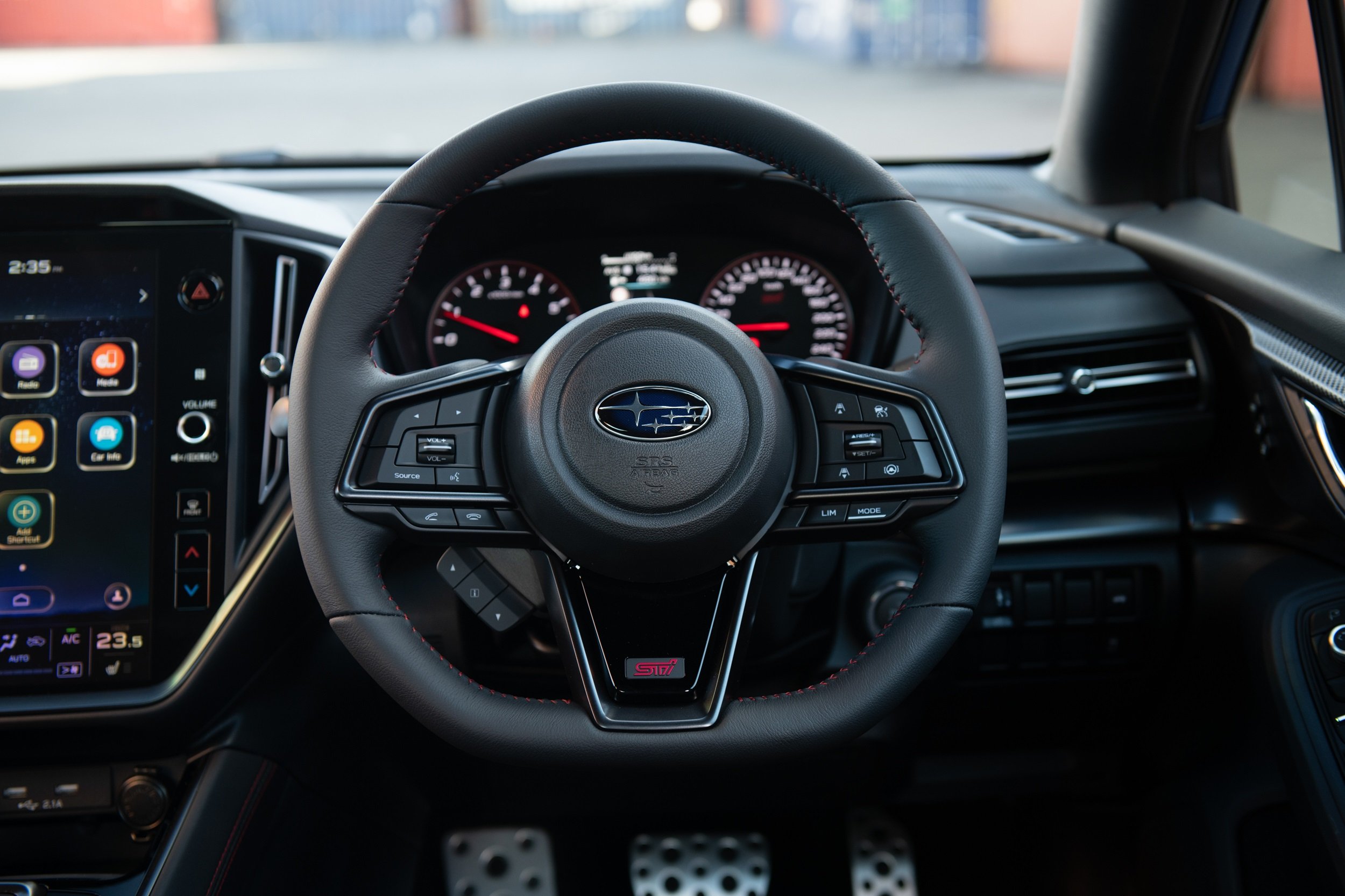
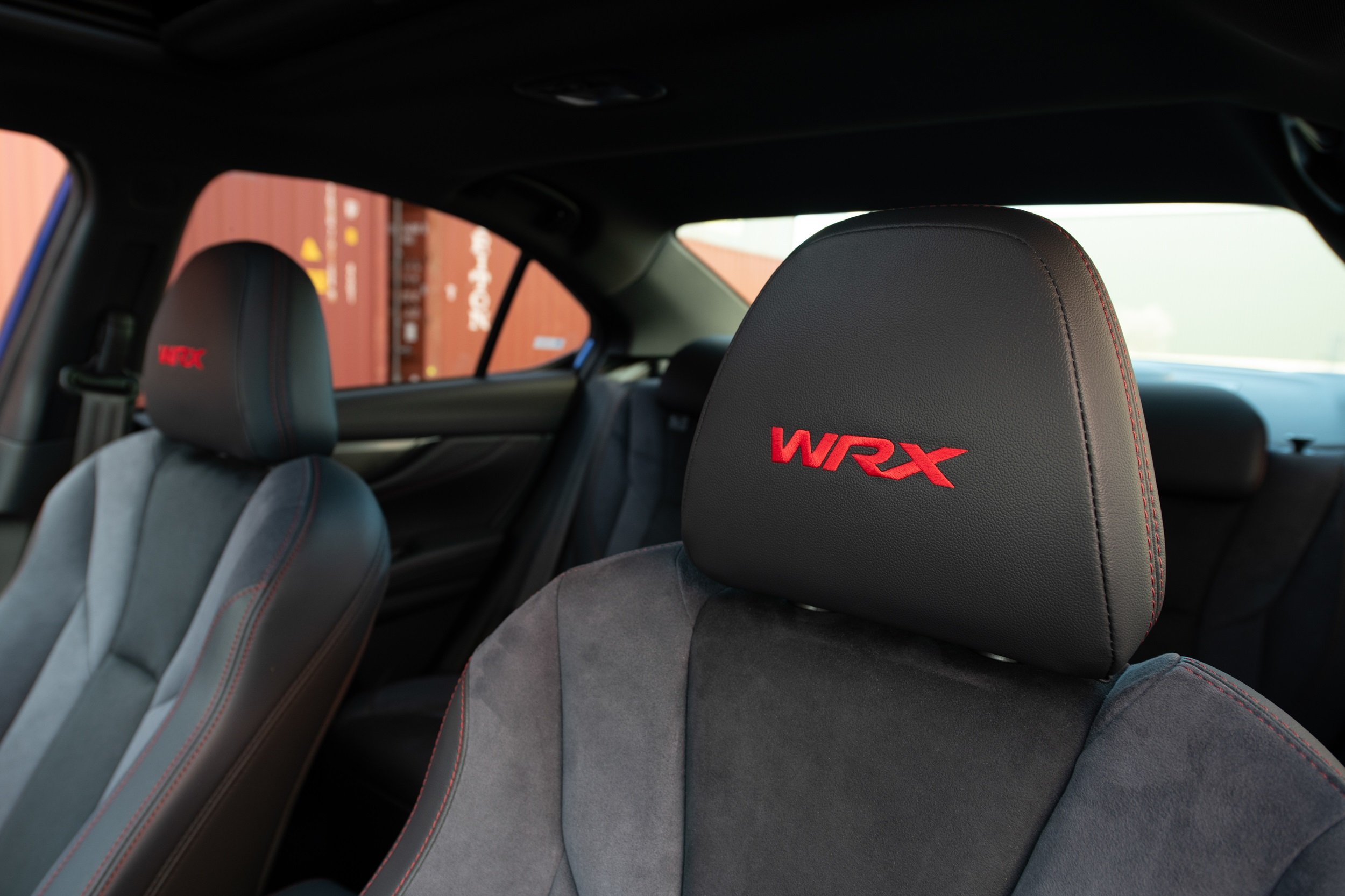
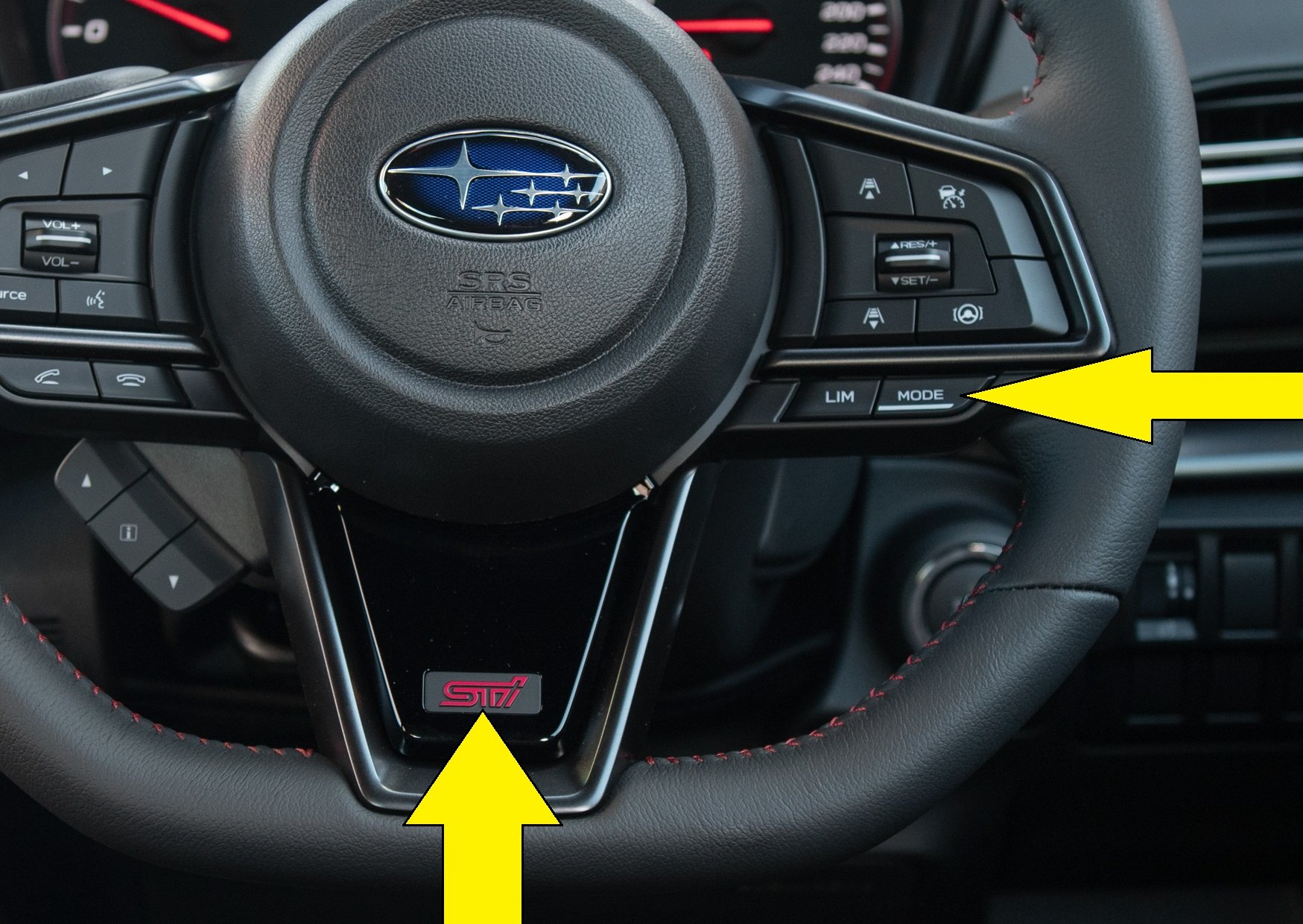
$2600 more for the tS adds:
Drive mode selection: Comfort, Normal, Sport, Sport+ and Individual
Electronically controlled dampers
Felt-lined door bins (yes, felt)
12.3-inch full LCD driver’s instrument cluster
RECARO front seats (8-way electric driver’s seat and 4-way manual passenger seat)
And that’s it for $63,700. Now if you’re mad keen on a WRX to begin with, that’s going to be a fairly straightforward task of deciding what kind of driving you want to do.
And if you’re trying to get away from the fraudster SUV automatic transmission-riddled life you’ve been forced into all these years, going ‘back to basics’ with either the entry-level with manual gearbox, or the RS with manual gearbox, they are going to be the pics for you.
But if you want to truly experience what Subaru can offer, the electronically mapped dampers do work pretty well when you get off the main highways and onto the favourite piece of twisty mountain road. It just depend on you and your budget.
WRX tS Spec B | $61,500 before on-road costs ($65,000 driveaway approx.) | adds:
Six-speed manual transmission
19-inch dark grey alloy wheels, Bridgestone Potenza S007 tyres
Brembo brakes incl. gold-painted 6-piston front and 2-piston rear callipers
Ventilated, drilled front and rear brake rotors
Rear spoiler
RECARO sports bucket front seats
8-way electrically adjusted driver’s seat, 4-way manually adjusted passenger seat
12.3-inch LCD driver’s display
Drive Mode Select – Comfort, Normal, Sport, Sport+ and Individual
STI logo set into leather steering wheel
Red ‘WRX’ dashboard embroidery
Available in “Galaxy Purple Pearl” paint colour
MAIN COMPETITORS
There aren’t many performance wagons left in the Australian market. And the ones that are left, fortunately, are from brands with poor customer support: Volkswagen and Skoda.
The Golf R is gone as of 2024 (which was obscenely overpriced anyway), there was the Mazda 6 until they cancelled it for 2025 and beyond, and the German luxury brands BMW, Merc and Audi are all overpriced and unreliable. Then there’s the inter-brand cannibalism between a WRX Sportwagon and an Outback XT.
Ranked on price, you basically need to make an informed choice here between three vehicles. They are:
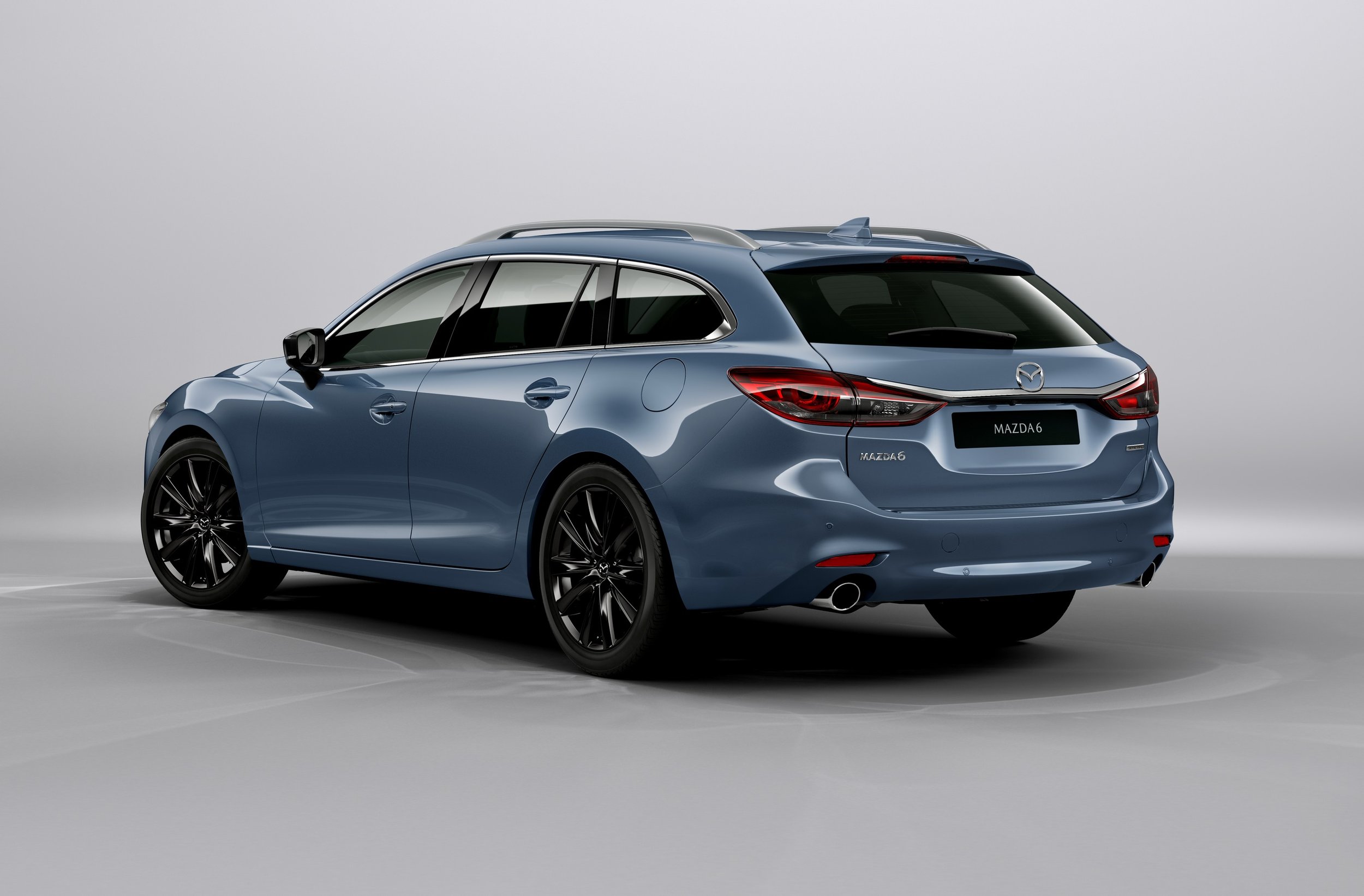


Looking at these figures alone, you might be asking, therefore, the following questions (or at least you should be):
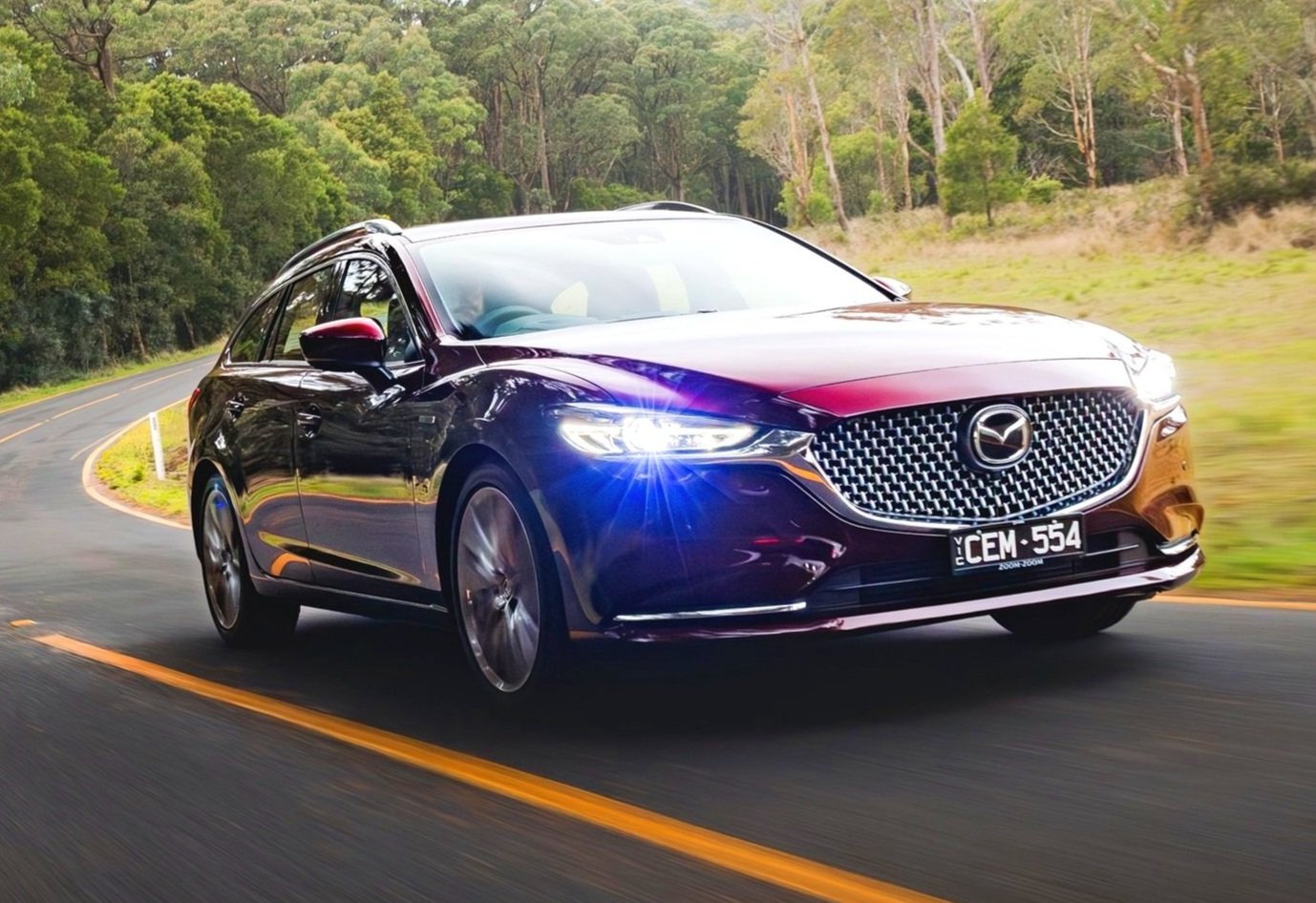

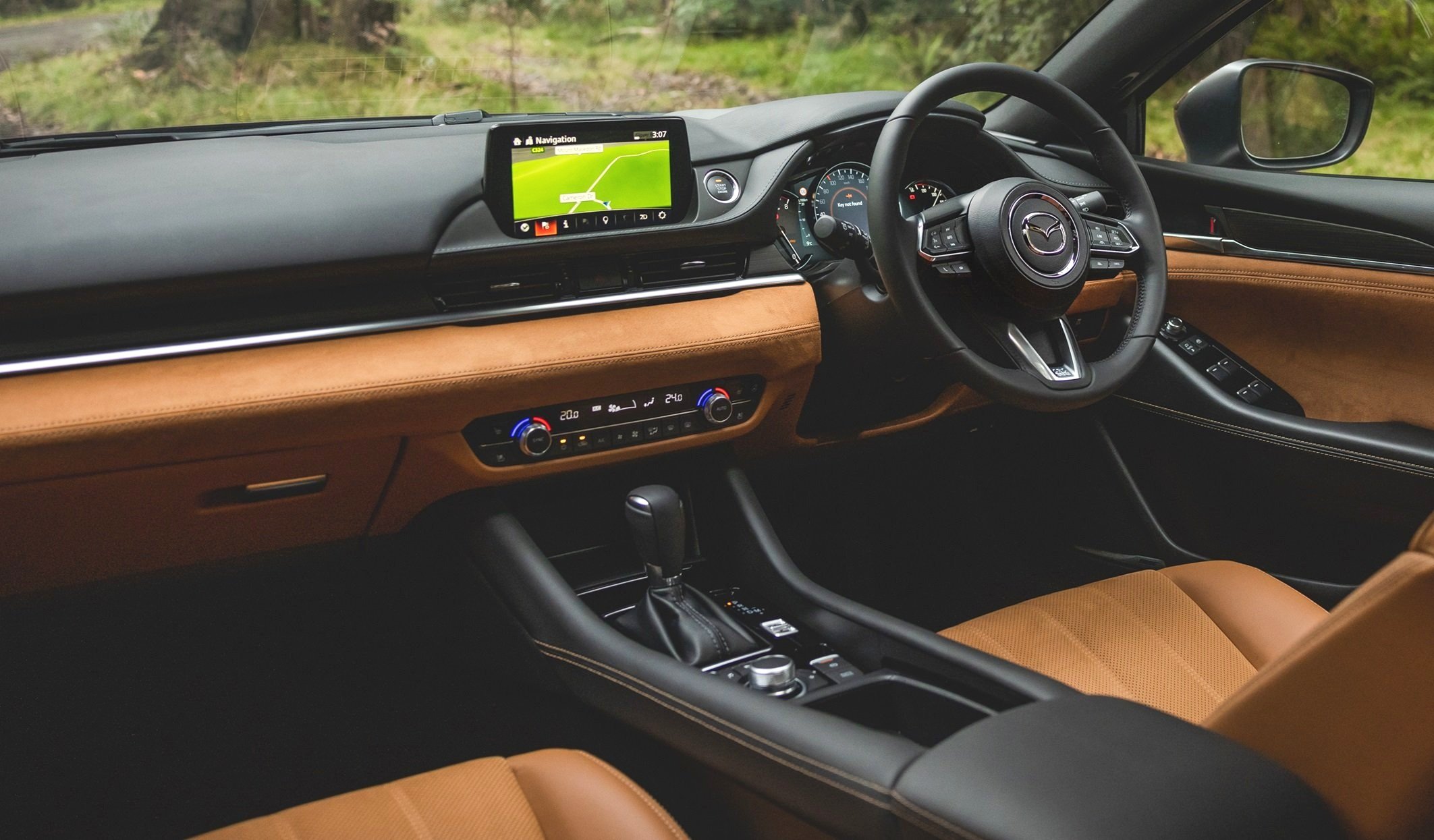
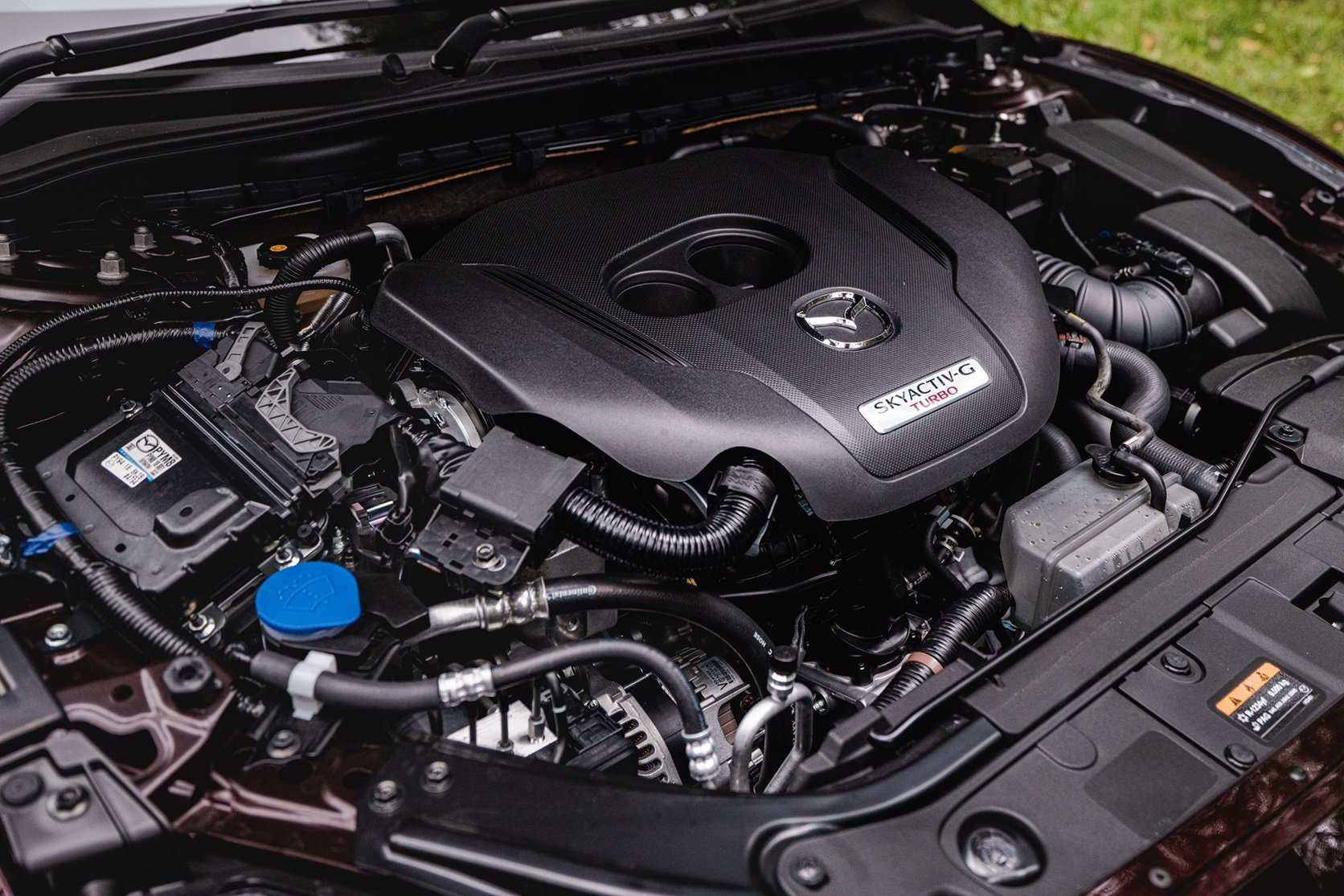
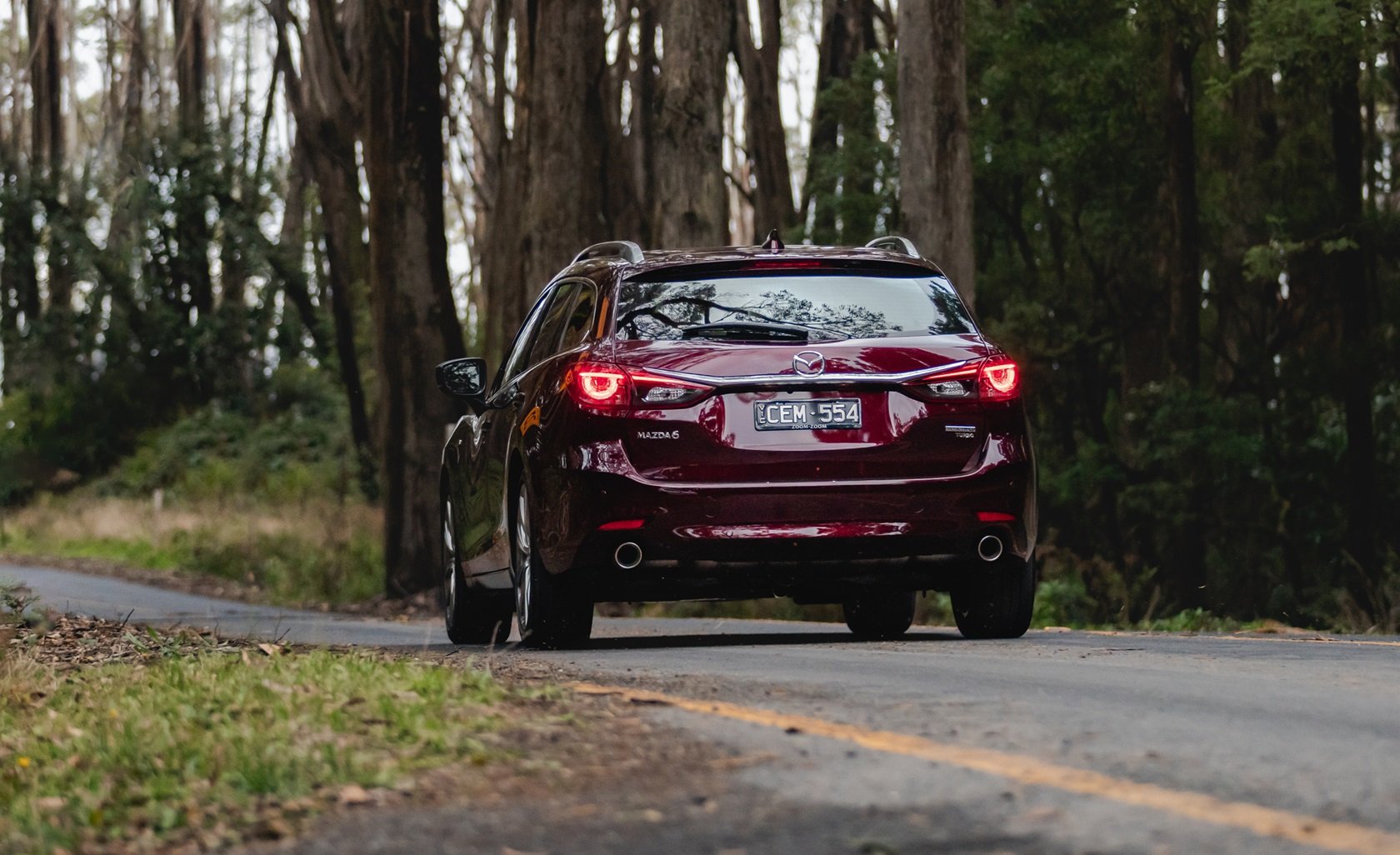
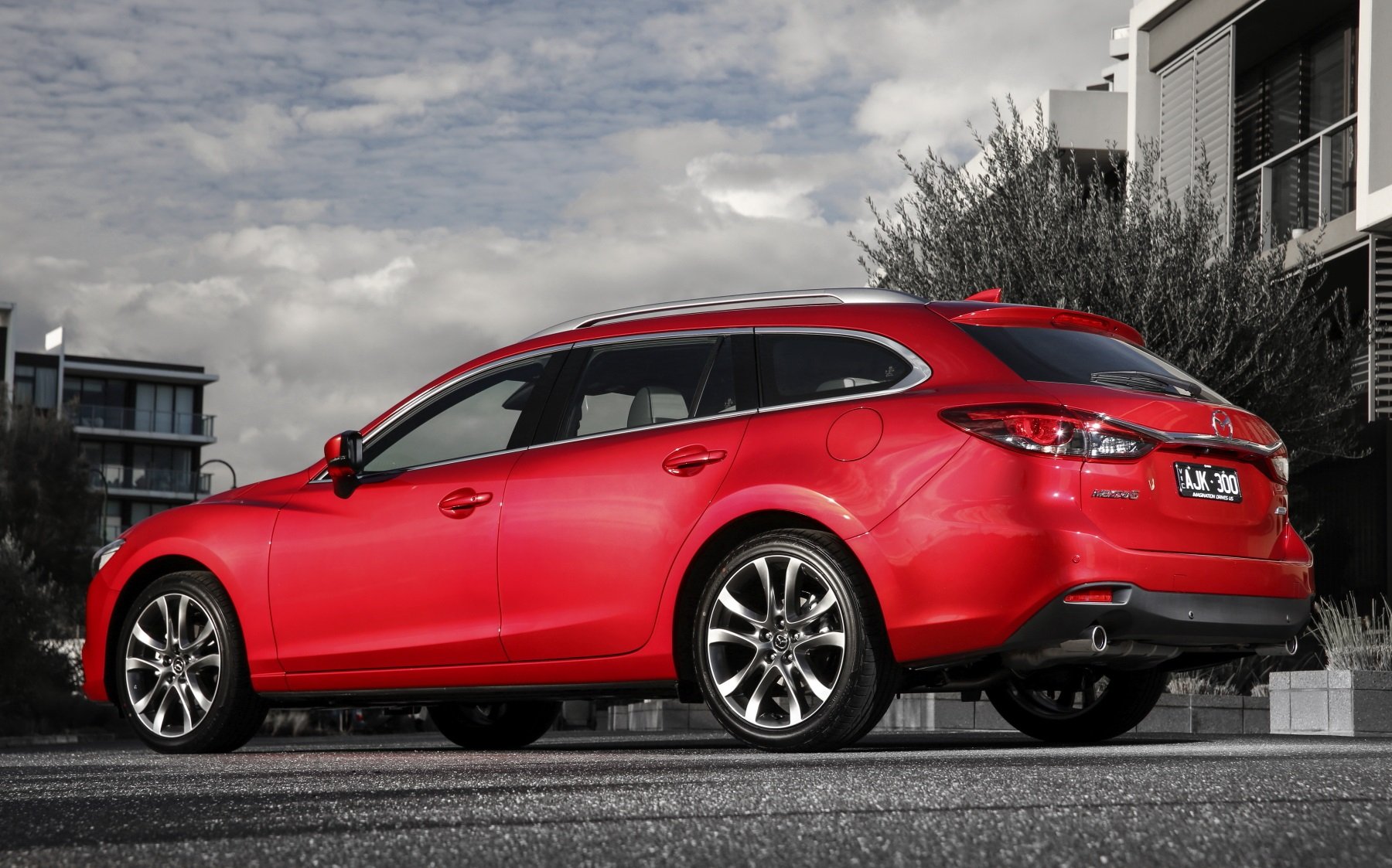
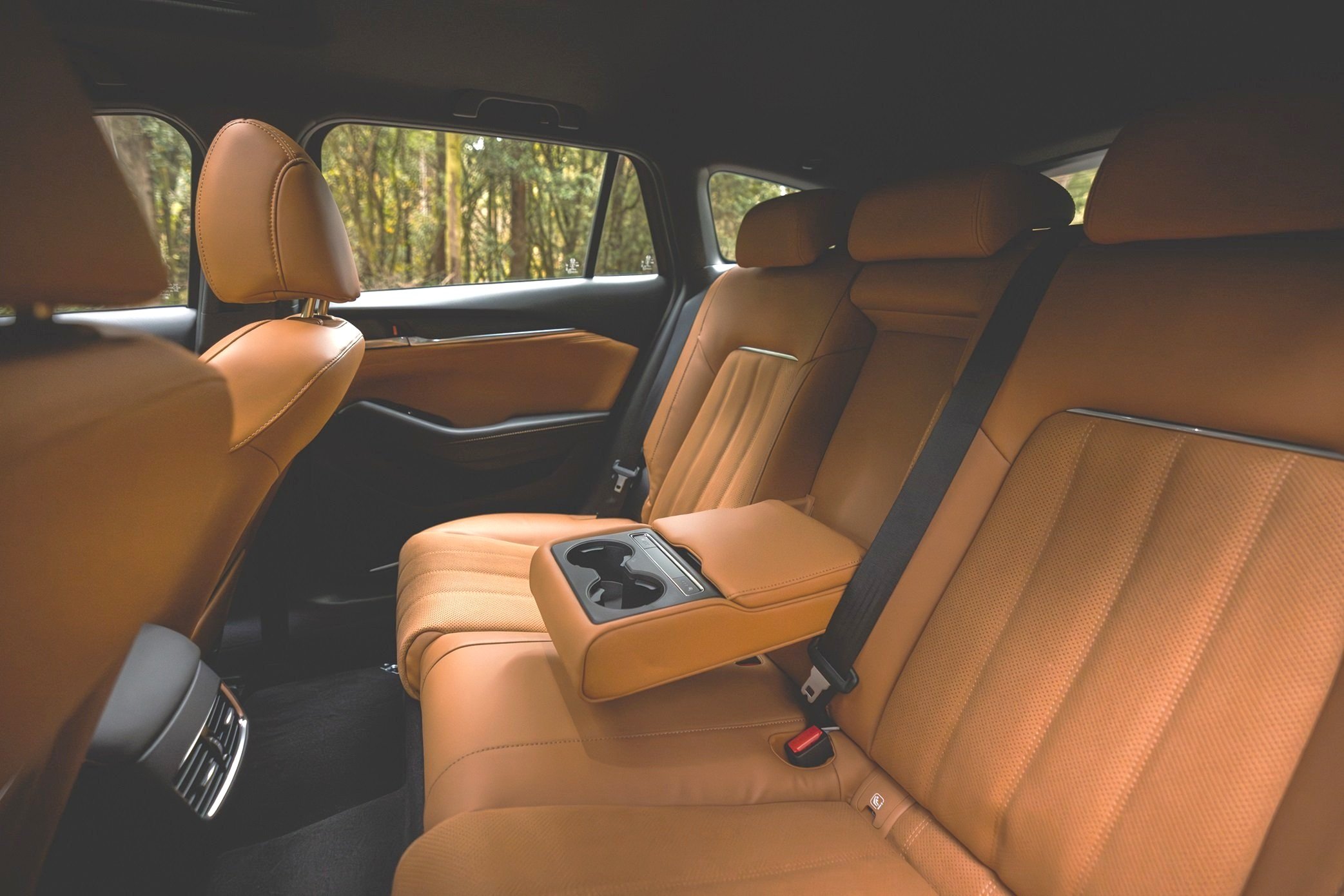
Mazda 6 Atenza ($52K):
ENGINE: 170kW @ 5000rpm, FWD
WEIGHT: 1629kg (kerb), 107.9kW/t
SIZE: Wheelbase is 2681mm, boot volume (seats up/down): 506 litres / 1648 litres
That’s 2 per cent more luggage space than the WRX Sportwagon with row 2 up, and 12 per cent more when you drop them. So the Mazda wins on outright practicality.
FUEL: 91 RON (62L), claimed economy: 7.6L per 100km (combined)
Does the Mazda 6 offer greater luxury appointments? No. WRX has all the same appointments but only needs servicing every 15,000km (or 12 mths) instead of 10,000 (or 12 mths) for the Mazda.
But the Mazda 6 will be a more comfortable long-distance cruiser owing to the smooth low-end power available from the SkyActiv 2-litre at 2000 revs (where you typically drive) instead of the Subaru’s 5200 RPM peak power point, which is revving its knickers off.
Depends what you like, really. You should be test driving both and seeing how they compare. We also know the remaining Mazda 6 stock won’t be around much longer, given everybody is, seemingly reverting to SUVs. Spare parts should be okay for a few years, but get in quick before that dwindling stock dries up. Should be able to get a good deal though.
Subaru Outback XT
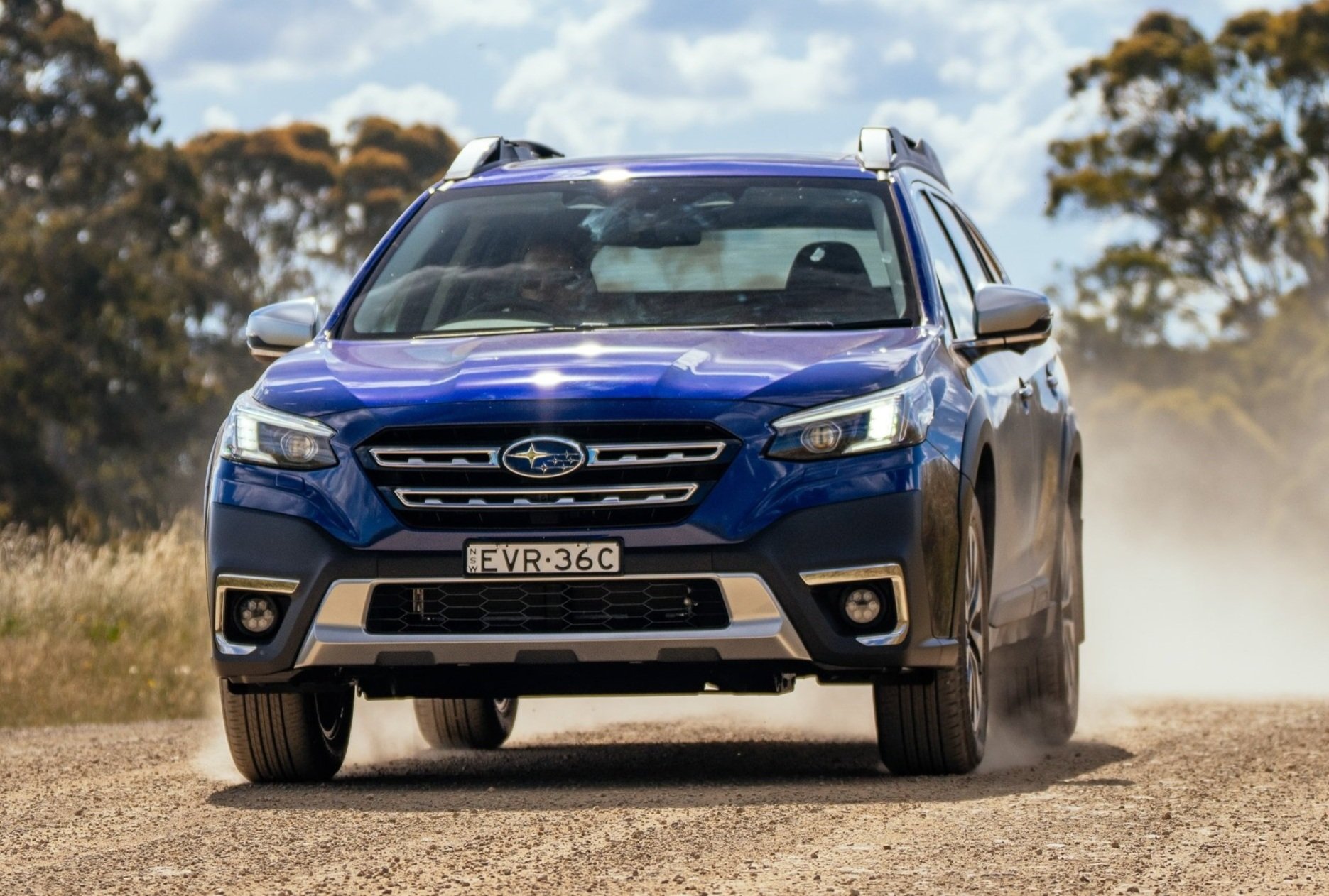

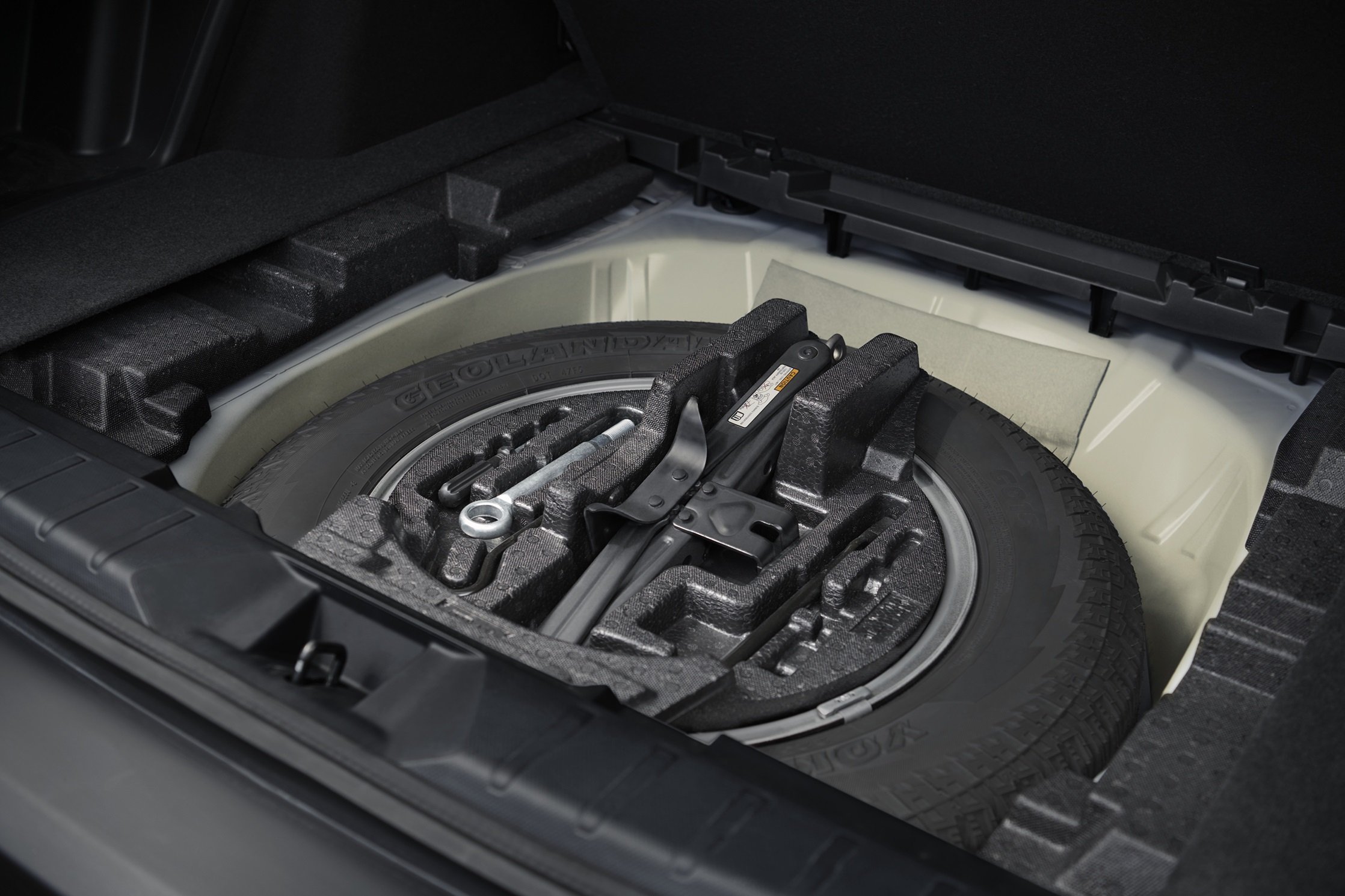
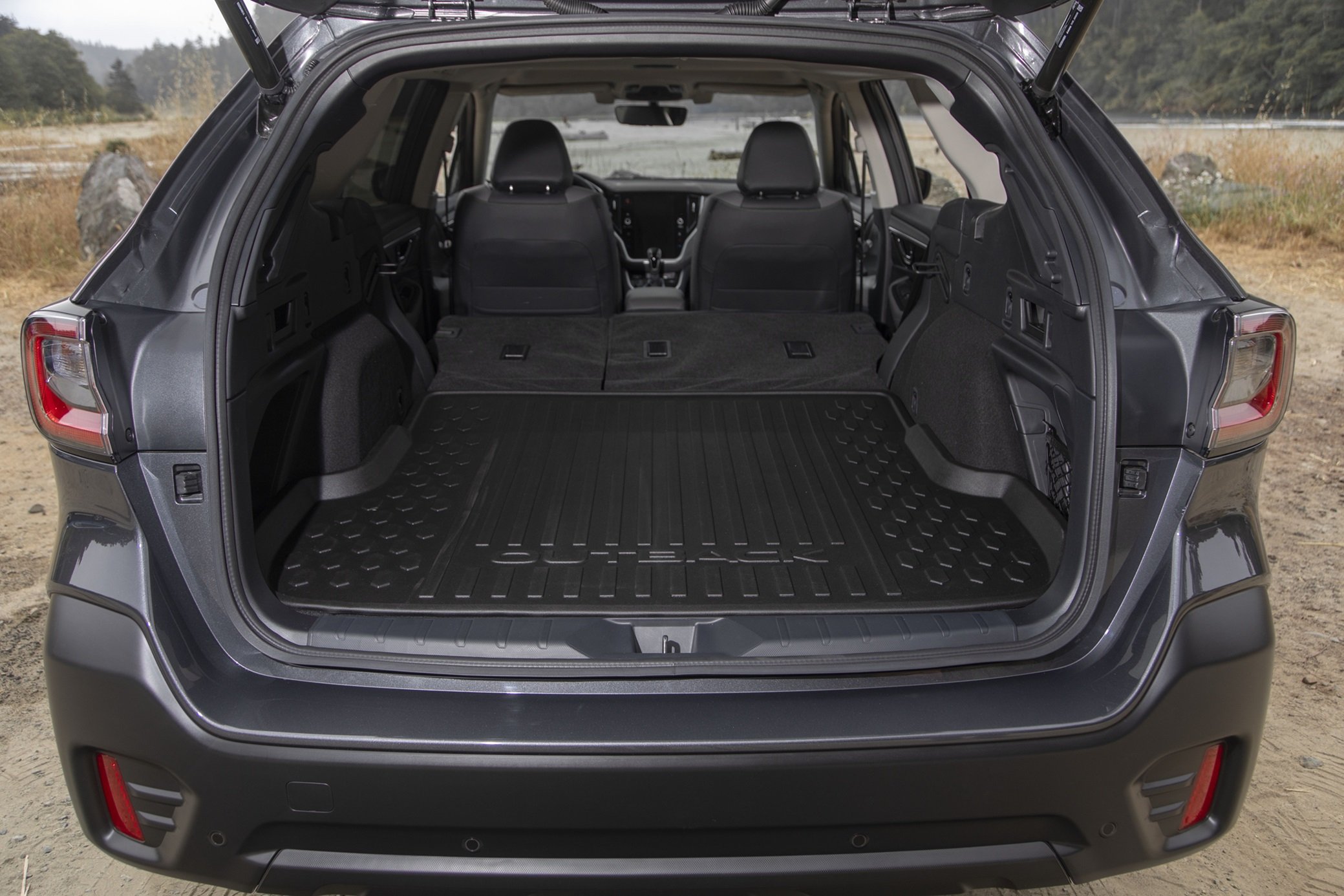
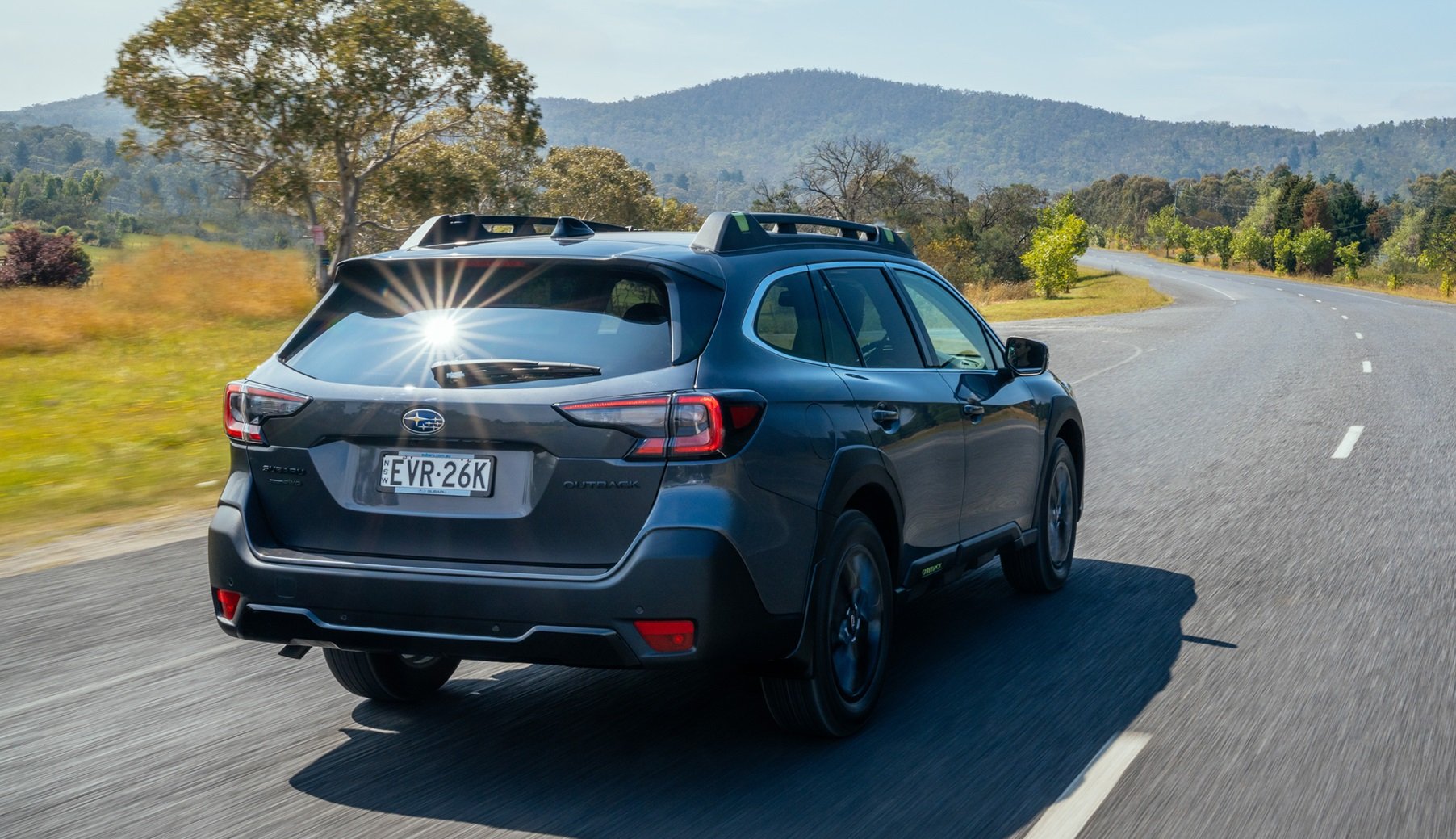
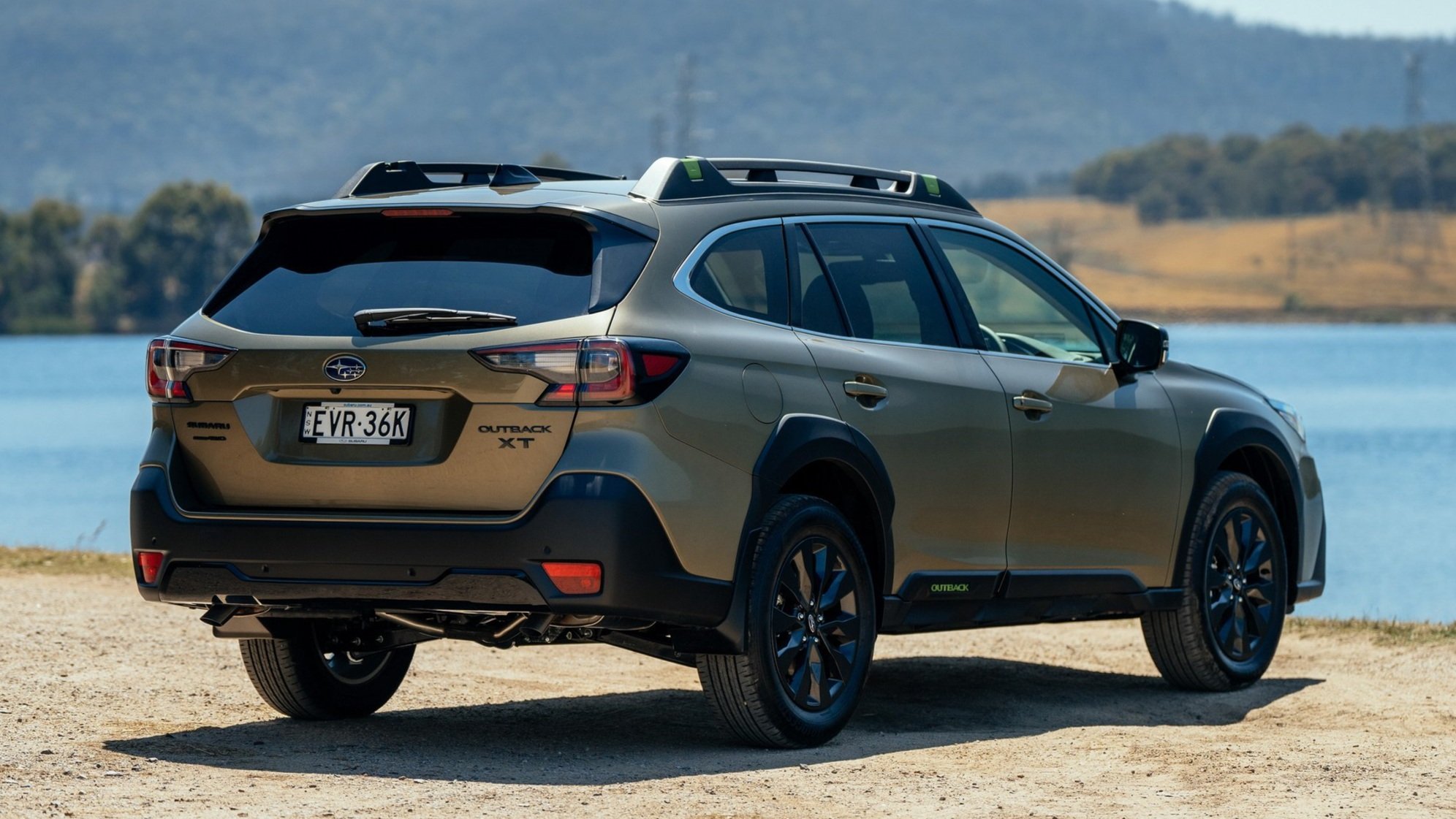
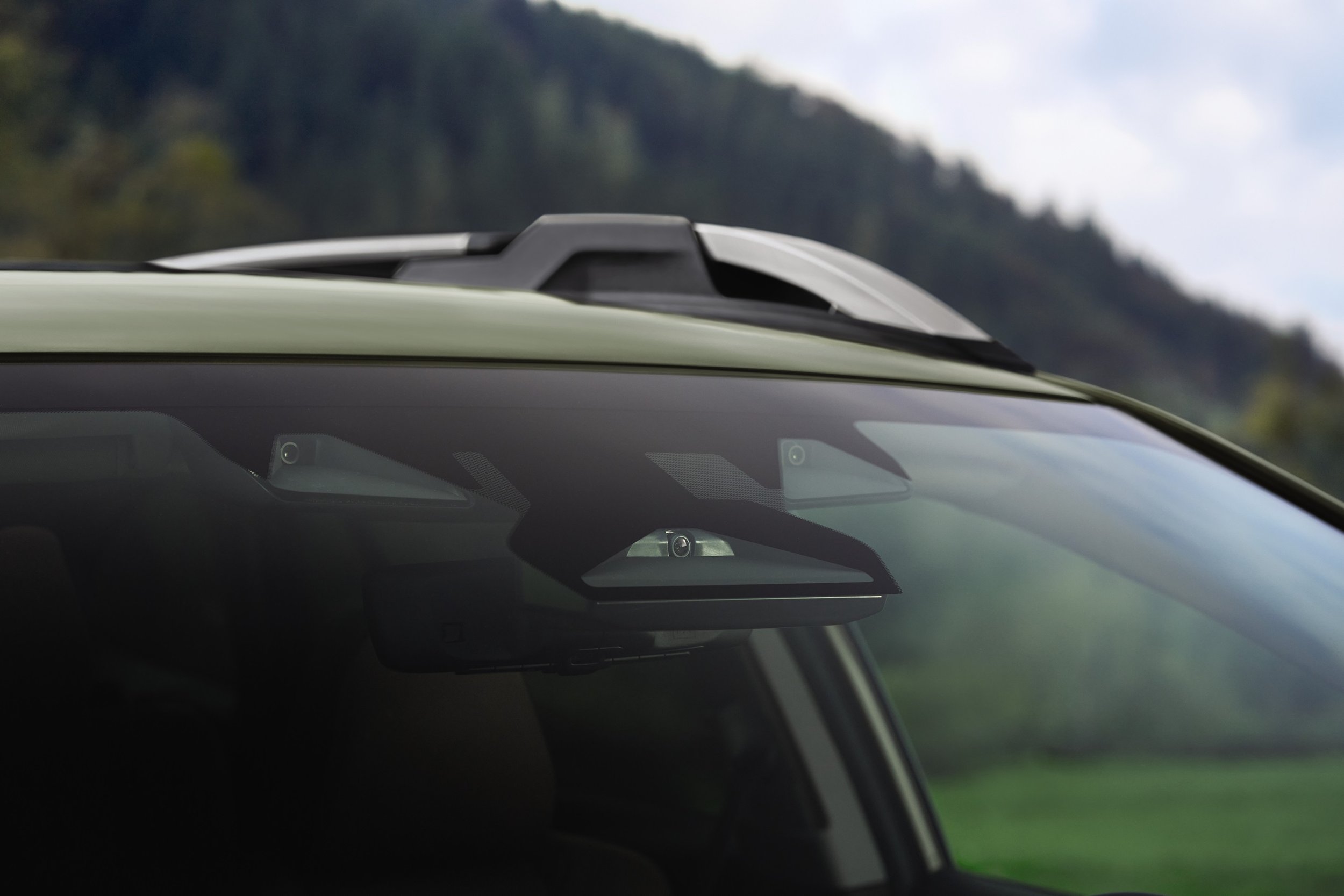
The plain-labelled WRX, from entry-level ‘WRX AWD Sportwagon’ to ‘tS Sportwagon’ weighs 1607kg dry or, when you include the 63-litre fuel tank, 1654kg to 1660kg respectively. This is when you multiply 63 litres of fuel by its weight, which is about 0.75kg per litre.
It’s about 50kg shy of a top-spec Outback Touring, which does have a much bigger boot, roof racks and the same 63-litre fuel tank, as well as 213mm of ground clearance, versus 140mm (that’s a 7.3cm difference - whoop-di-doo).
But it’s not going to be a potential saving, because Outback and new WRX Sportwagon are about the same price. Outback is $46,700 - $55,000, Sportwagon is $55,600 to $64,000
So why would you choose the Sportwagon over an Outback which offers more; more practicality, better towing potential, an overall greater expedition vehicle? WRX is still in the wheelhouse of a comfortable family tool, but it gets performance lacking in all other Subaru models.
Well, WRX Sportwagon is not only going to be a nicer drive owing to its lower mass-centre (learn more here >>) but being 50kg lighter and offering substantially more power at 202kW - it returns a power-to-weight ratio of 125kW per tonne. That destroys the Outback’s 84.9 potential in even its lightest form. Two very different kinds of transport.
Skoda Octavia RS ($57.5K):
ENGINE: 180kW @ 6500rpm | 119 kW/t
WEIGHT: 1542kg (kerb),
SIZE: Wheelbase is 2681mm, boot volume (seats up/down): 640/1700 litres
FUEL: 95 RON (50L), FWD.
Is the Skoda really a better value proposition?
Not really. It offers marginally better boot volume, but is 43mm shorter in overall length and only 10mm (1cm) longer in the wheelbase (so interior legroom is gonna be the same), the turning circle is virtually the same.
While the boot space is a 148-litre difference, that’ll be because the WRX carries an almost-full-size spare under-floor (205 versus 245). The Skoda gives you all the safety and security of a front-drive only running on a skinny, temporary space-saver keeping you on the road in the wet, on the freeway, at night, while your kids and dearly beloved are asleep as you navigate trucks, slopes and blind crests, while tired after the long weekend. WRX is more car for similar coin.
Subaru WRX tS Sportwagon ($60K before ORC):
ENGINE: 202kW @ 5600rpm | 125 kW/t
WEIGHT: 1660kg (kerb),
SIZE: wheelbase: 2670mm, boot volume (seats up/down): 492/1430 litres
FUEL: 95 RON (63L), AWD.
Do any of the others offer all-wheel drive for less than $70K?
Nein.
The Volkswagen Golf R was expensive. And the additional performance you got wasn’t really justified on public roads. Kinda defeats the purpose of having all-wheel drive, doesn’t it?
WRX Sportwagon offers you that cheeky grin when you put your foot down to overtake a truck or something on the motorway or on some long stretch of country road. And it feels pretty effortless doing it. The CVT is responsive and flicking a paddle to downshift is quite satisfying, if a little lacking a little weight behind each paddle.
Loading up your Sportwagon means ample room for stocking the bar and making sure the bride gets to the reception safely. Dad points.
So, should you buy a Sportwagon or the sedan?
Chances are you’re at least considering an SUV like the Mazda CX-5, Subaru Forester, Hyundai Tucson, Kia Sportage or even a Mitsubishi Outlander. They’re popular, and that’s okay. But are they better?
Well, you can’t get a diesel engine in the Tucson anymore and the Sportage is about to go the same way, sadly, because that 2-litre diesel is brilliantly efficient and powerful at normal driving revs.
The WRX does demand premium 95, which is in pretty much every service station these days, so you don’t really have that old problem of not having 95 available. Maybe in some very regional servos, but that’s an outlier and not the norm.
The 2.5 turbo-petrol SkyActiv engine in Mazda CX-5 is a firecracker, but it is better in the Mazda 6 sedan or wagon due to those vehicles being lighter and having a lower centre of gravity.
And the Mazda’s interior is arguably better than a BMW, so there’s that to consider. However, the Mazda’s AWD system is on-demand, which means it waits for wheel-slip before directing torque to the rear; Subaru’s symmetrical AWD is mechanical and constantly splitting tractive effort to all four.
CX-5 offers 442 litres of boot volume. Sportwagon: 492L.
Forester is very practical with its big wide boot, best ground clearance of any medium SUV, reasonable light towing and a snarling exhaust/engine note - but it’s got nothing on the WRX for outright performance. Forester, like Outback, is a bit boring actually. But with the same WRX engine in the Outback, it is a tempting offer if you ever intend to go on any scrappy, unkempt gravel backroads.
The Sportwagon only comes with Subaru’s ‘Sport Lineartronic’ CVT automatic transmission - no manual, that’s for sedan only.
The other aspect here is that WRX Sportwagon offers two kinds of desirability, performance and practicality. It’s the same reason Holden Commodore Sportwagon was so popular in its day.
Ultimately, the decision is up to you, so think carefully about how you’re going to use a vehicle such as this 90 per cent of the time, while benefitting from its credentials as a practical, multi-role fighter jet for the road.
THE JOY OF WRX
Let’s talk about outright performance, because that’s the overarching purpose for buying a WRX. In which case, you’re probably considering the sedan - and the Hyundai i30 N hatch or possibly the Skoda Octavia RS, too.
You’ll want to know that all-wheel drive system is just begging for you to push it harder, you want to feel the surge of turbocharged air feeding back into the engine and propelling you forward, turning that tailgating bogan ute into a 1:43 scale model in your rearview mirror.
Yeah, it does all of that, and quite smoothly, you’ll be glad to know. But the WRX’s party piece is that grippy, confidence-inspiring driveline.
AutoExpert WRX images: Haberdash Photography >>
The whole car has that feel of every nut and bolt being torqued-up perfectly. It feels tight, solid, but not overly dense.
But let’s get something straight here. Even the bad boy WRX has to comply with the modern world’s safety mandates and the prevailing winds of community expectation. It’s not good ploughing your WRX into someone’s living room window, is it?
The way this thing handles in the modern road network, in traffic, in the rain, at a moment’s notice, is astounding. We’re talking agility, feedback through the steering wheel, confidence that the grip you require for virtually any manoeuvring is possible and safe to execute.
What’s pleasant about threading this WRX through carparks, laneways and suburban streets is that you never need to guess where the fore and aft corners of the vehicle are relative to you. It’s quite easy to see out and once you’ve adapted to the overall proportions of the car, and thanks to little hacks like sticking the door mirrors on the door, leaving you the front corner glass to sight kerbs and obstacles, you can weave with confidence.
Then you hit the freeway on-ramp and light the fires, so to speak, and that addictive surge of turbocharger-induced torque punches you up to highway speed.
Smoothness is not one of those historical traits you’d normally associate with a WRX, but it is now. It feels very tightly put together and yet doesn’t feel harsh in that jarring track-day kind of way. The comfort factor is ever-present, but that doesn’t mean it’s gone soft either.
When it comes to choosing the right version, you do get two opportunities for a manual transmission in the base ‘WRX’ and the ‘RS’, with the total weight increasing only 37kg between the two, from 1479kg to 1516kg (tare). But interestingly, the power output stays the same across the range at 202kW up at 5600 revs. Therefore, the power-to-weight ratio decreases as you add more features, and this goes for the CVT auto as well, obviously.
ENGINE
Between base auto and ‘tS’ auto, you go from 130.5kW/t to 127.4 - you lose 3kW of useful motive power just to move the additional 37kg of mass. So, are you setting lap times, or will there be actual kids and other civilised adults accompanying you?
In the case of the latter, the ‘tS’ is going to be ample performance, but having said that, there is something wholesome about rekindling your affinity with the manual transmission, doing it yourself and appreciating the long list of standard base features.
Opting for the lower-spec WRX means, of course, you don’t get the goodies like the 10-speaker Harman Kardon stereo (with doof-doof), heated electric seats, power sunroof, or the electronically controlled dampers which are the highlight of the ‘tS’ grade. You can customise how the car behaves, from throttle response and steering resistance (to your inputs, as in, the electric servos require more work from you), to suspension severity and the front-to-rear bias of the all-wheel-drive system.
The system restricts how much torque the centre differential sends to the front, thereby sending more to the back. In normal driving mode, the torque is split 45:55 (front:rear), whereas the ‘Sport’ mode offers a much greater rear bias:
The level of adjusted [torque] split depends on a number of factors, based on data received from several vehicle sensors.
- Subaru Australia
So the computer reads a bunch of information coming in and determines how much torque it can send to the stern.
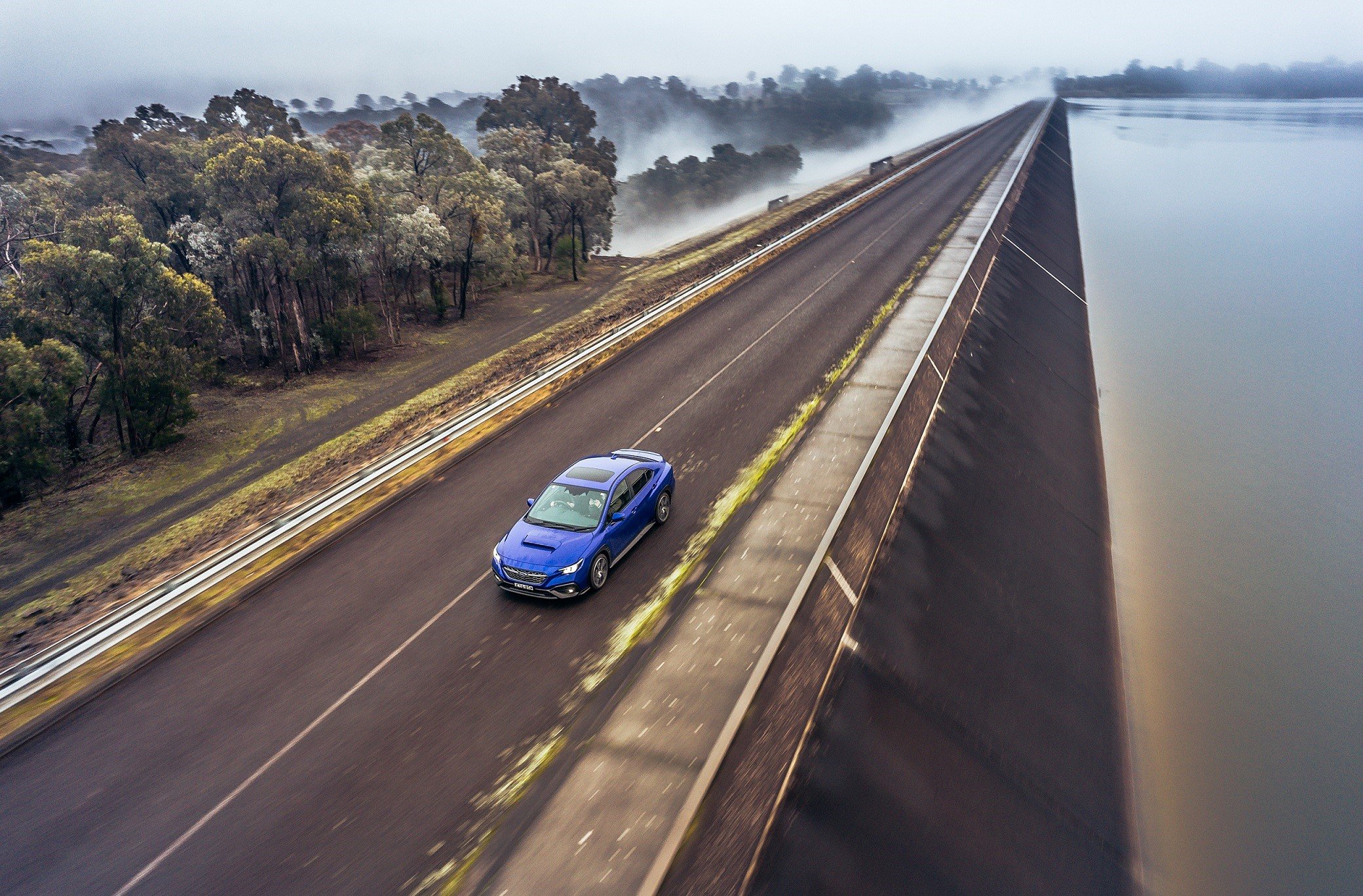
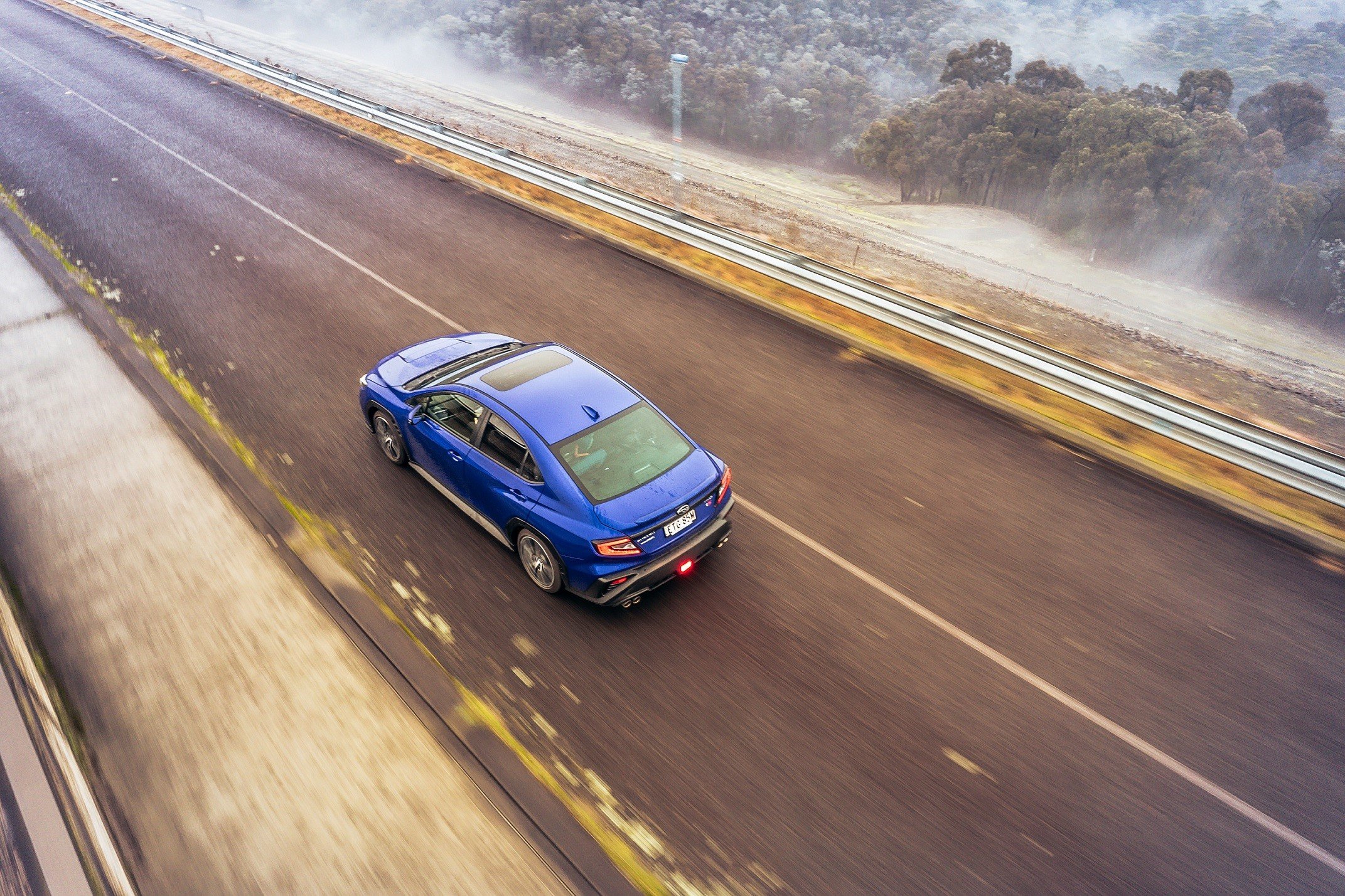
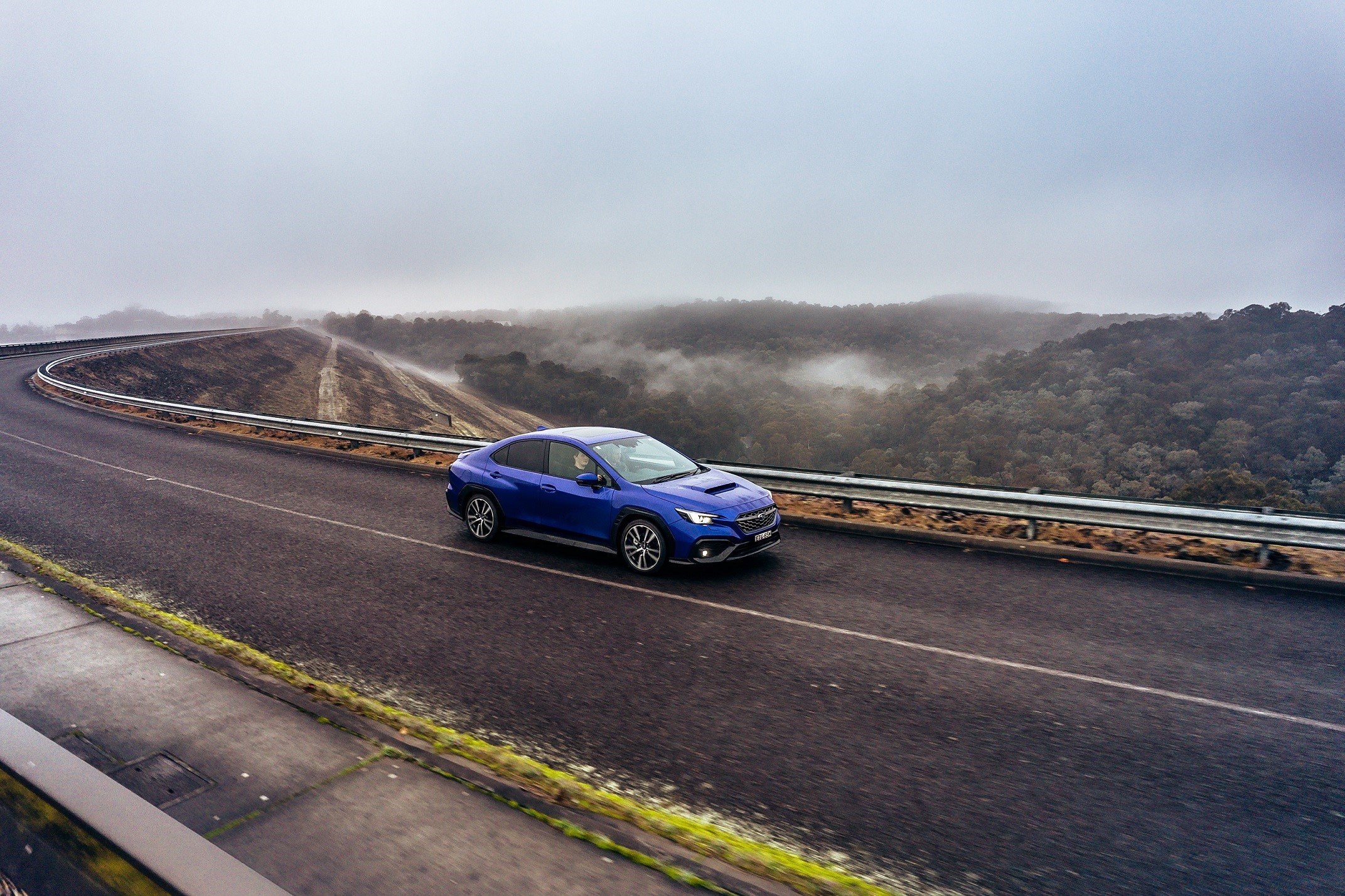
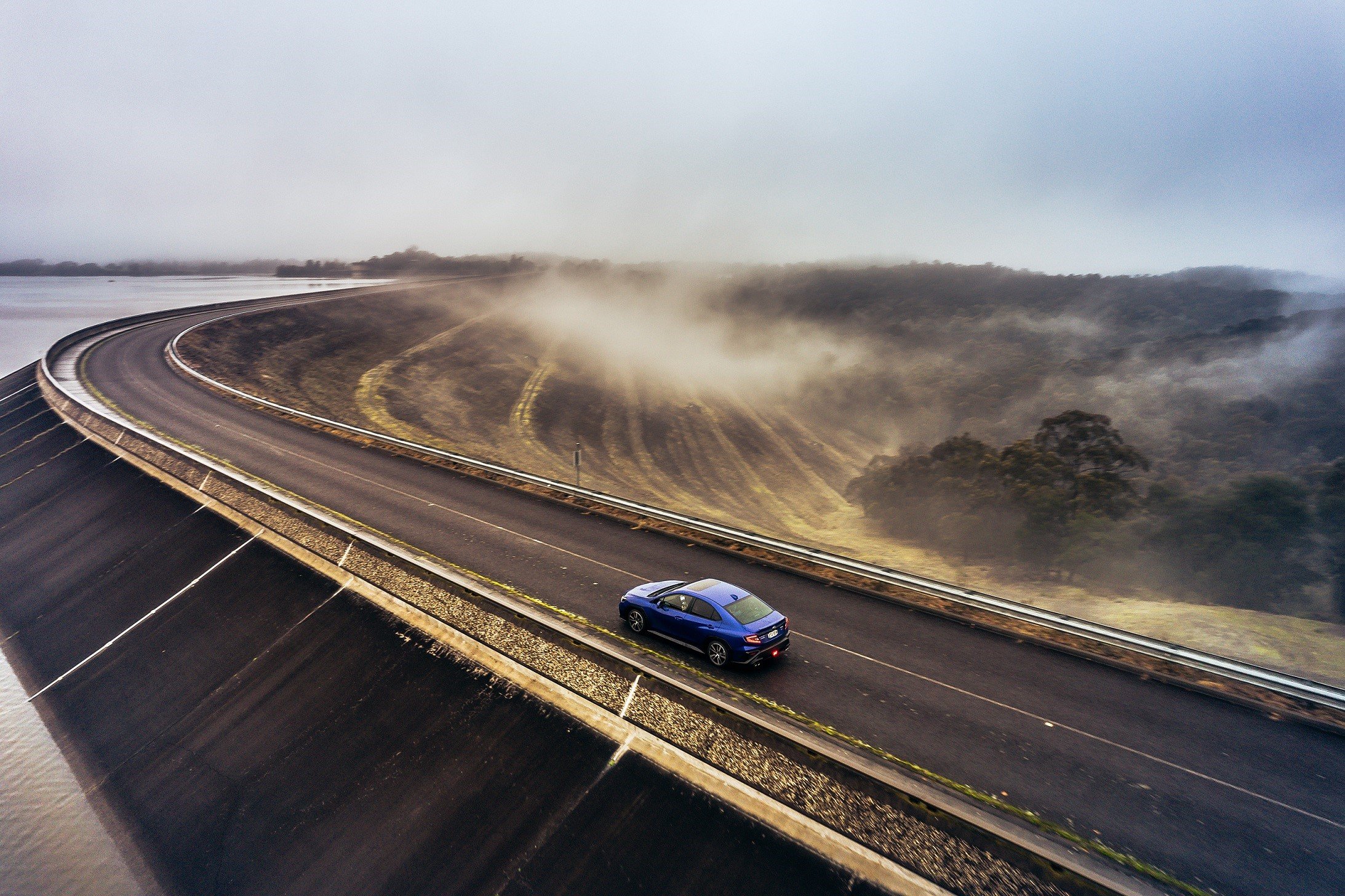
So exactly how rear-drive can your WRX be, then?
The maximum degree of split is information not currently available.
- Subaru Australia
So there it is. Or isn’t in this case. Subaru probably doesn’t want others copying its AWD performance attributes so openly, but you can guarantee they’ve thought carefully about how to manage it.
Ultimately, when it comes to choosing the right WRX, you need to decide what you want in life.
The power-to-weight ratio is better in the manual versions, thanks to that lighter transmission, but it’s likely going to be a slower gear change than in the CVT. The CVT, it needs acknowledgement, behaves like a proper DCT or dare I say, even has moments downshifting when it arrests speed like a sequential.
So, choose how you want to drive your Subie.
Features on all WRX grades are numerous and not restricted to the higher echelons.
This includes the big 11-inch touchscreen, although you’ll want to get very familiar with it in order to minimise eyes-off-road distractions when changing things. Temperature control remains in button form, but basic driving set-up like turning off auto stop-start and deactivating lane-keeping require you to go into sub-menus off the main screen. It will take time to make these things a start-up procedural habit.
Alloy wheels change with model grades, but remain 18-inch jobs, which is an interesting observation given the carmaker obsession with putting bigger, heavier wheels on everything, ultimately increasing unsprung mass. But not on WRX. They’ve actively tried to reduce it, by reducing brake rotor thickness from 30mm to 28, for example.
Tyres on sedan are 245/40R18 and on Sportwagon they’re 225/45R18 - so a slightly narrower and fractionally taller profile tyre on the wagon, but you’re unlikely to notice the difference.
The bonnet scoop is real, as you’d expect on a WRX. It uses a paper air filter for optimal airflow characteristic, reducing air pressure loss by 20 per cent.
The exhaust, which is dual-exit on Sportwagon and quad-exit on sedan, offers a nice combination of civilised but characteristic burble.
It goes without saying that WRX is not an SUV with purposeful ride-height designed to clear grass and sticks with its underbelly. But for demonstrative purposes only in these images, it is helpful to know that you can get further with a greater sense of confidence if you visit rural areas or are faced with unknown, unsealed roads that your sedan or Sportwagon are better equipped for these situations - especially in the wet - than the Mazda, Volkswagen or Skoda competition.
And unlike an uncomfortable (by comparison) ute or hardcore 4WD which are much more agricultural on sealed roads, a Sportwagon or Rexy sedan are going to be quite comfortable in both situations - and do not require you to tinker with differentials and low-range transfer settings. It just does it, out of the box, so to speak.
Unless you’re doing hardcore off-roading, you don’t actually need all that additional vehicle just to drive around the suburbs, visit people or places in the country, or even go camping. Roof racks are very handy on ordinary passenger vehicles - because simple, light and non-permanent vehicle modifications are better than buying a vehicle with too much un-utilised capability.
The WRX might be 12 per cent heavier in ‘tS’ form, but, as discussed, you can level-peg with the Golf by getting the lighter base WRX which is has 130kW/t to pip the VeeDub’s 127. You just don’t get all the toys. But winning’s winning, as Dom would say.
I would also recommend the eight-speed CVT in the WRX is going to be friendlier in terms of robustness and reliability compared with the dual-clutch in the Golf, especially if you do a lot of city-based stop-start driving. Premature clutch wear is going to be a greater issue for the DSG than Subaru’s venerable continuously variable transmission - which leads us to the next important consideration with the new WRX, in just a moment.
So, overall, it’s a fairly convincing argument that the WRX will be the better performance option with less expensive ownership considerations. Fuel is going to be negligible because while you might spend a fraction more at the pump, you’re paying more upfront for the Volkswagen which you won’t make back in fuel savings for several years.
According to Redbook.com.au’s pricing guide, with your fully-optioned GTI costing $61,390 before taxes, rego and stamp duty, and the tS WRX at $57,000 - the $4390 difference, at $1.99/L for 95 RON on average, will buy you roughly 35 tanks of fuel before break-even.
I'll help you save thousands on a Subaru WRX
Just fill in this form.
No more car dealership rip-offs
Greater transparency
Less stress
TRANSMISSION
Despite the efforts of Nissan, Toyota, Mitsubishi and, in the past, Subaru itself - all trying, seemingly, to make the CVT seem as dull and boring to drive as wet cardboard, this version in the new WRX is a CVT technical wonder to behold.
When you flick a paddle behind the steering wheel, it actually feels like a series of planetary cogs are interacting, with friction no less. Here’s my Ultimate Transmission Guide for details on how each transmission works >>
However, what’s actually happening is a drive pulley is tightening and slackening a steel belt in a predetermined manner by a very clever computer. Proper compression braking happens on downhill runs into either a toll road tunnel, or a sweeping mountain road.
When you down-change and demand power, its revs rise and continue to increase, just like a conventional epicyclic automatic.It doesn’t burst up the rev-range and sit there droning away like some half-hearted vacuum cleaner. Stuff actually happens and it’s genuinely satisfying.
‘But how?’ I hear you ask. ‘It’s a shitbox CVT, isn’t it?’ you may pontificate.
Subaru has gone to town on this new CVT. Up-changes are 30 per cent quicker than the old car. Down-changes are 50 per cent quicker. The computer will give you sharp rev-matching down-shifts when you’re braking hard into a corner (or in a straight line, for that matter).
Just think about that. Imagine blinking your eyes 30 per cent quicker. That’s impressive.
The entire drive experience is changed in this car, thanks especially to the 17 per cent reduction in operation noise over the old CVT.
The whole thing does more transferring of power thanks to a bigger and better chain/belt, so it accelerates better, it tightens and slackens with greater response and precision than it did before. Even in reverse you feel it, especially up an incline - with less moaning about the first law of thermodynamics, and more getting on with it.
The only noticeably painful inclusion is engine stop/start, which is proving a difficult car industry beast to kill. At least they’ve made it less confronting and abrupt than it typically is in every goddamn Subaru (and Toyota) they insist on putting it in. It’s a small price to pay - and Subaru has to do it to meet emissions standards, globally.
The button to deactivate it is right in the centre of the big tablet touchscreen, so it’s not hard to bugger it off.
Selecting the manual transmission
The six-speed manual in new WRX is lighter than the CVT, as discussed in the weight segment of this review.
Not much has changed except that the teeth on second and third gears have been honed using a grindstone rather than shaved with a shaving cutter. This change in tooling is more precise and reduces vibration and noise while making it a smoother action.
They’ve also made the transmission’s rubber mounts stiffer to increase the spring constant, as well as adding damping sheets to reduce further vibration and noise.
DRAWBACKS
No STI for this generation WRX
If you’re hanging out for the hottest WRX in the range, the STI, you’re going to be sorely disappointed. It’s not happening this time around.
In early 2022, Subaru Australia at the behest of Subaru Global told us all there was no souped-up factory version of the WRX coming out following the initial launch of the hot sedan and Sportwagon combo.
Subaru said it:
…will fast-track their investment in future performance technologies, today confirming there will be no STI variant for the new generation Subaru WRX.
So what does that mean, fast-tracking investment in future tech?
It means they’re getting ready to essentially do what Ferrari did with the LaFerrari, by adding hybrid or full-EV battery-electric tech to make a WRX go faster.
At least that’s what you should interpret when Subaru Australia managing director Blair Read says:
The prospect of what the Subaru Tecnica International engineering team can do with an electrified platform ensures an exhilarating future for Subaru fans, and we look forward to sharing with you what STI reveal next.
-Blair Read, Subaru Australia
It’s essentially a long-winded way of saying the next WRX STI will either be a hot hybrid or fully electric - or both.
Given the gestation time for a whole new platform, it makes economic sense to simply put the hottest current combustion gear into the new WRX, making it as hot as it can be, while preparing the STI brand for a pivotal direction change.
But the good thing is, it means you don’t have to worry so much about depreciating value on your tS, because you’ll already own the top-tier WRX, and you already have the hot bits on your tS WRX.
Bits like an aluminium bonnet which planed several kilograms off what a steel bonnet would’ve been. As do the Aluminium front quarter panels which reduced another 2.3kg and improved weight distribution.
You get a functional bonnet scoop and proper air outlets on the wheelarches and the rear bumper to reduce turbulence
Even the fuel filler door is now fibreglass instead of steel to shave off 161 grams. Don’t share that at dinner parties. They won’t understand.
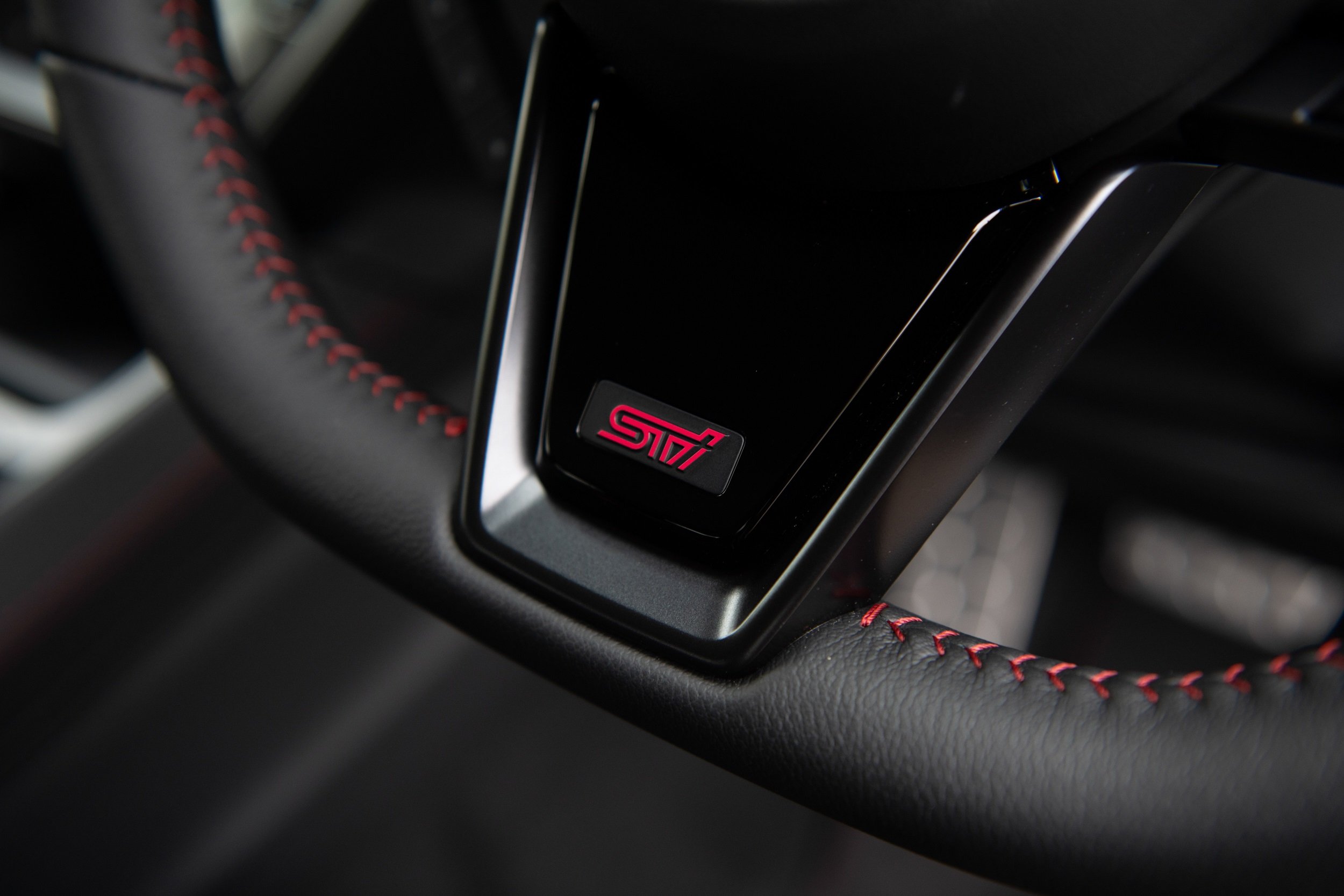
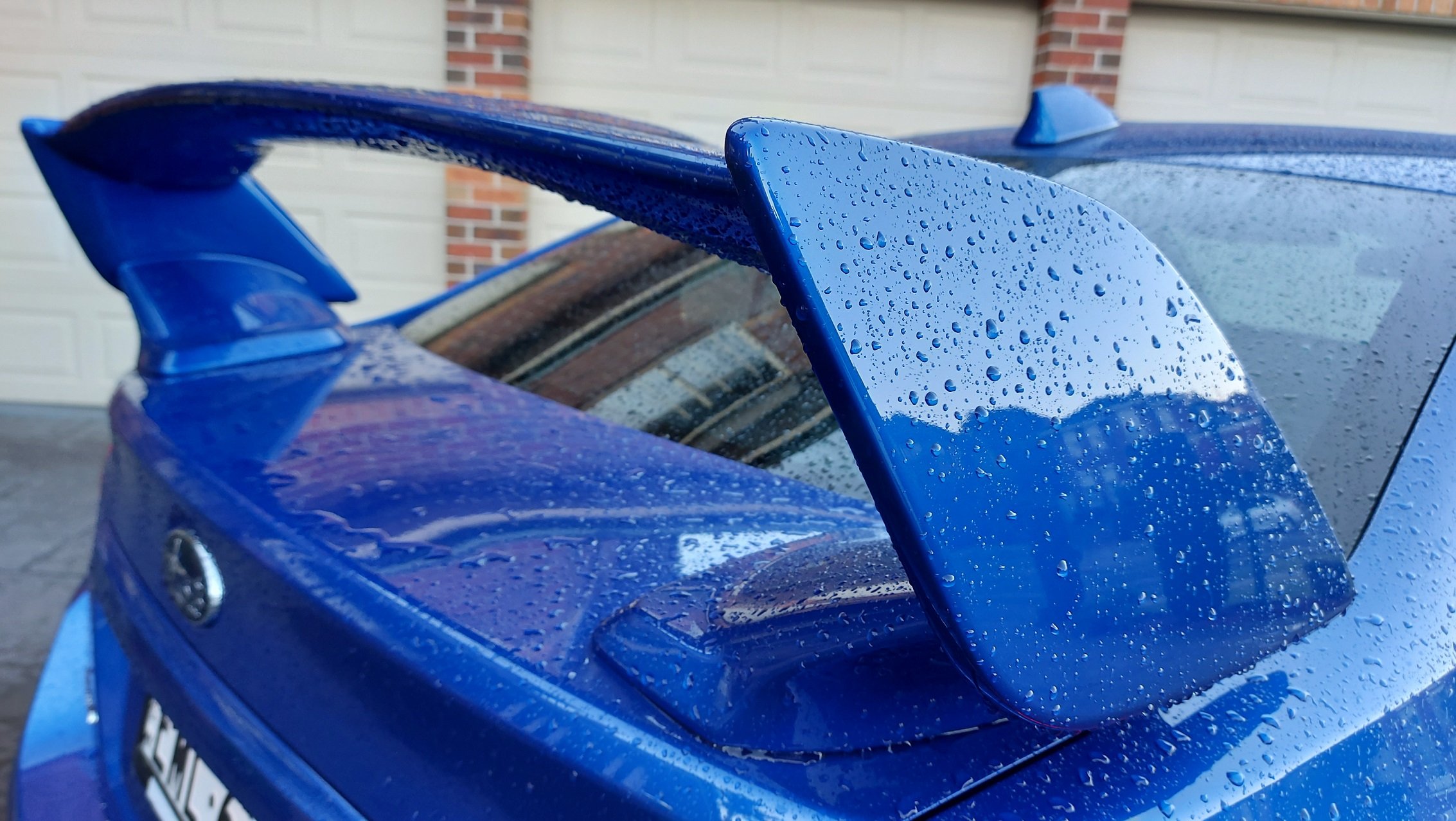
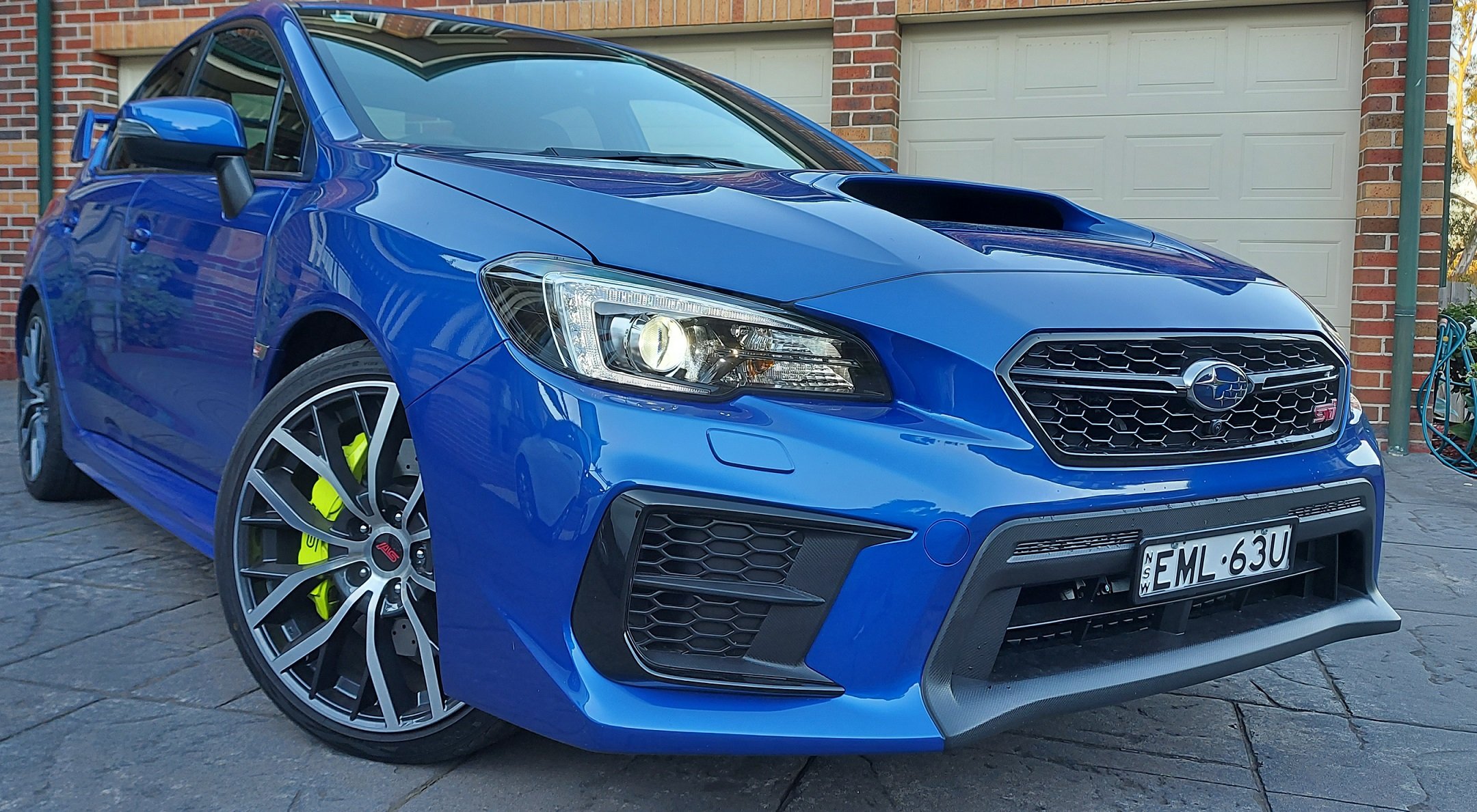
Just be grateful you won’t stand out like every STI WRX owner in history, either with friends and family, the broader public any time you drive anywhere mundane like to the shops or movies (where people mutter under their breath all kinds of obscene judgements about your personality).
And there’s a good chance the cops might even pull you over less often.
Family wagons are dying out
It’s important to understand that the wagon is part of a slowly declining segment. Don’t be surprised if the Mazda 6 Wagon is killed off after this generation of Mazda 6 is done with, possibly even before.
The market has chosen to go with SUVs, despite their overall weight increase, their stowage deficits and compromise in the balance between dynamic handling and familial utility. But you also need to know SUVs are not as practical as they purport to be. Often SUVs have worse boot volume than sedans and wagons, so be sure to compare and measure. Here’s how the car industry measures boot volume >>
Adding millimetres to the ride height means carmakers try to give SUVs a wide lower section at the rear to create luggage space, and they narrow the roof profile in order to keep the centre of gravity to a minimum. You can learn more about vehicle dynamics, handling & tuning >>
Essentially, it’s the reason sedans and wagons will always handle and drive better than an SUV equivalent. But consumers have ultimately chosen, en masse, to buy the so-called ‘Sports Utility Vehicle’. So your success at re-sale time with a wagon is potentially not going to be as dead-easy as selling an SUV, in my view.
Having said that, be aware that Subaru is a desirable brand with pedigree in this area, so that should counter some of that lost market enthusiasm for the wagon.
CONCLUSION
The new Subaru WRX might not offer the hardcore STI big-wing and low-chin ego statement of previous iterations, but all this does is offer you the complete package.
For years critics have been screaming for Subaru to find its passion in putting the hot bits in more attainable models - well they’ve done just that with the Sportwagon for those who need to justify their next new family car but can’t quite leave their enthusiast roots behind.
And Subaru Australia has a good reputation for looking after customers, which is nice.
If you’re looking for a fast, furiously sensible vehicle that offers the performance of a turbocharged rally car with the real-world usage potential of an SUV, the WRX is back, baby. Even if you are forced to get the wagon by you-know-who.
At least this time and unlike the Levorg, everybody knows what the name WRX means.

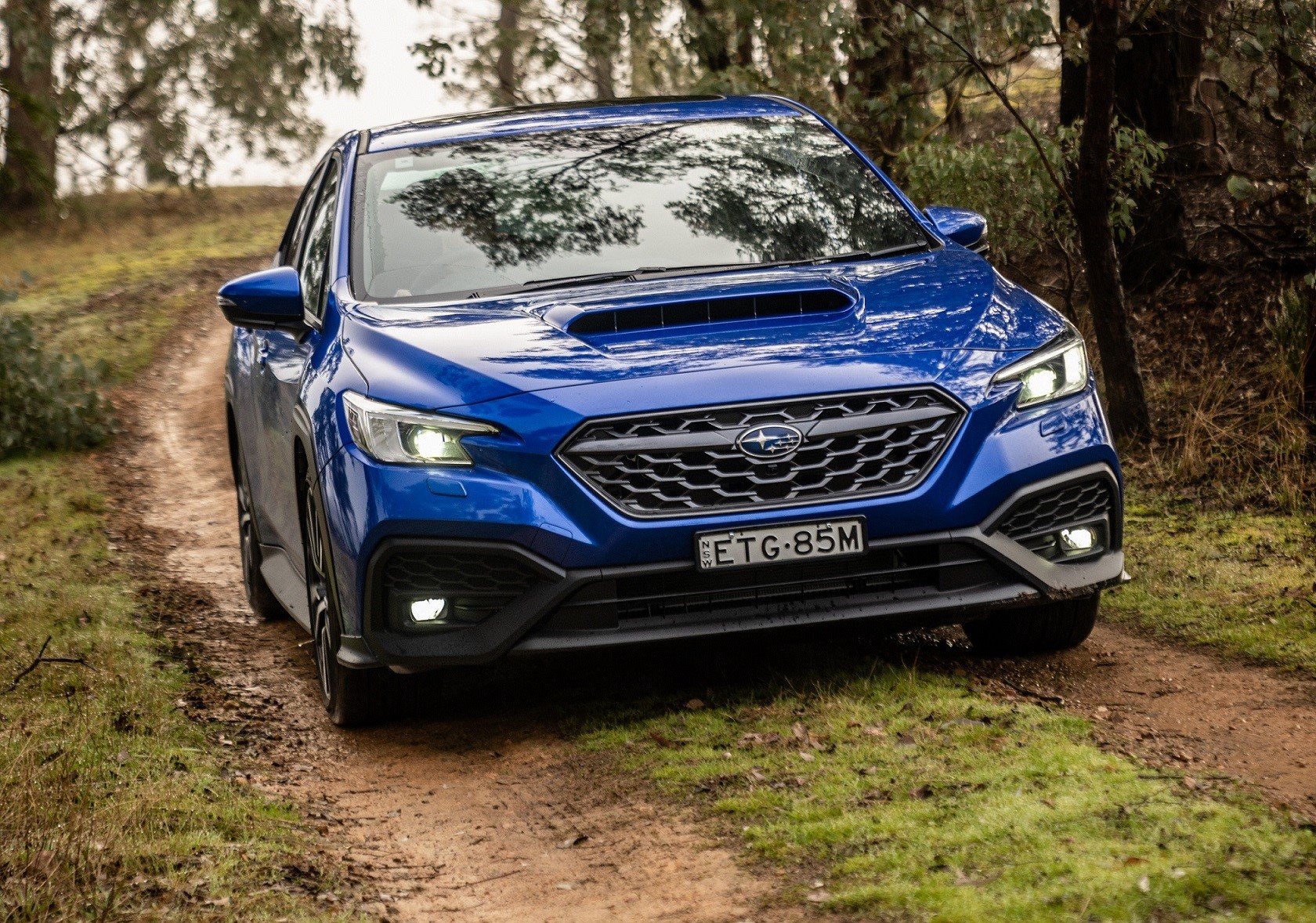
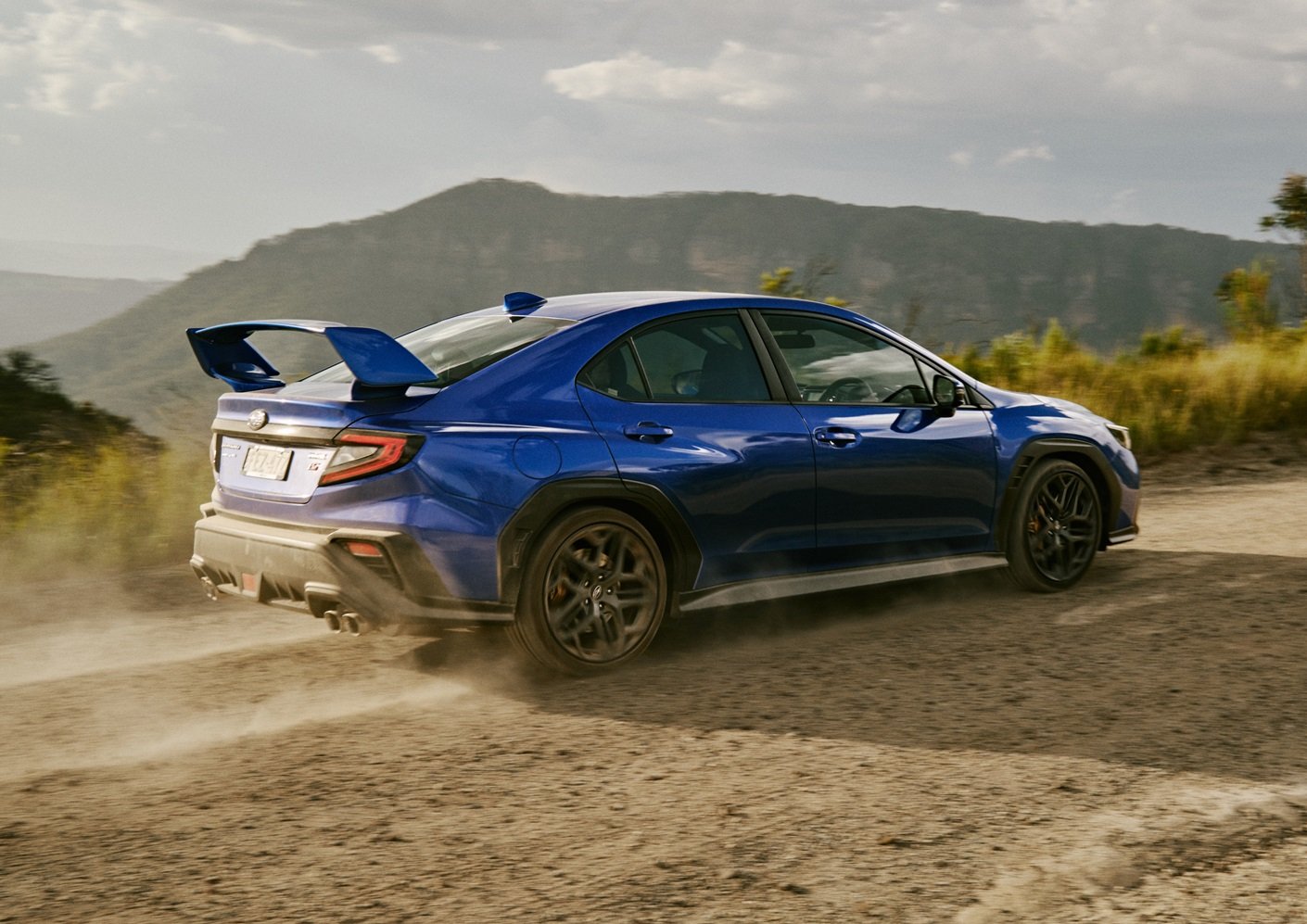
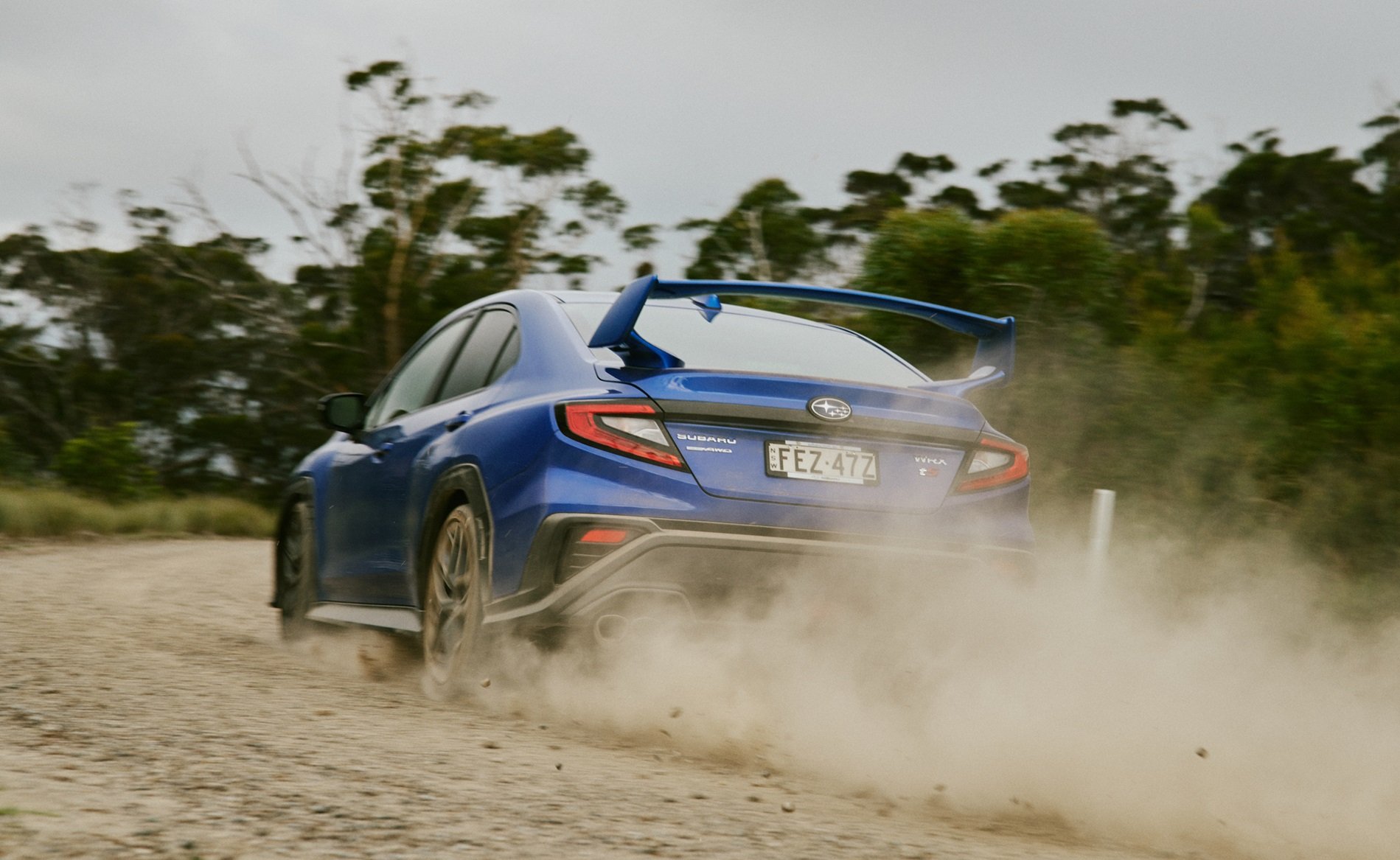
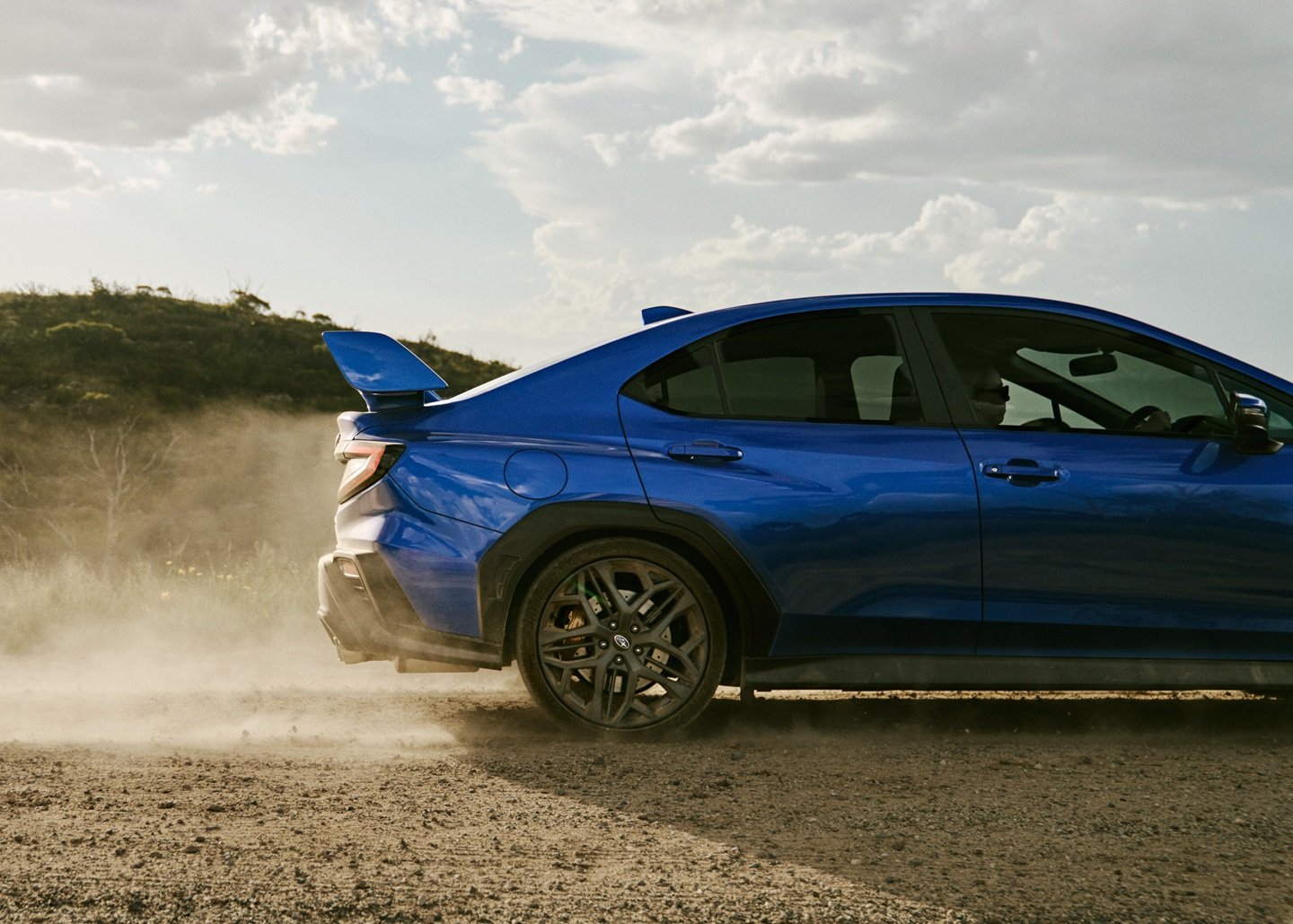


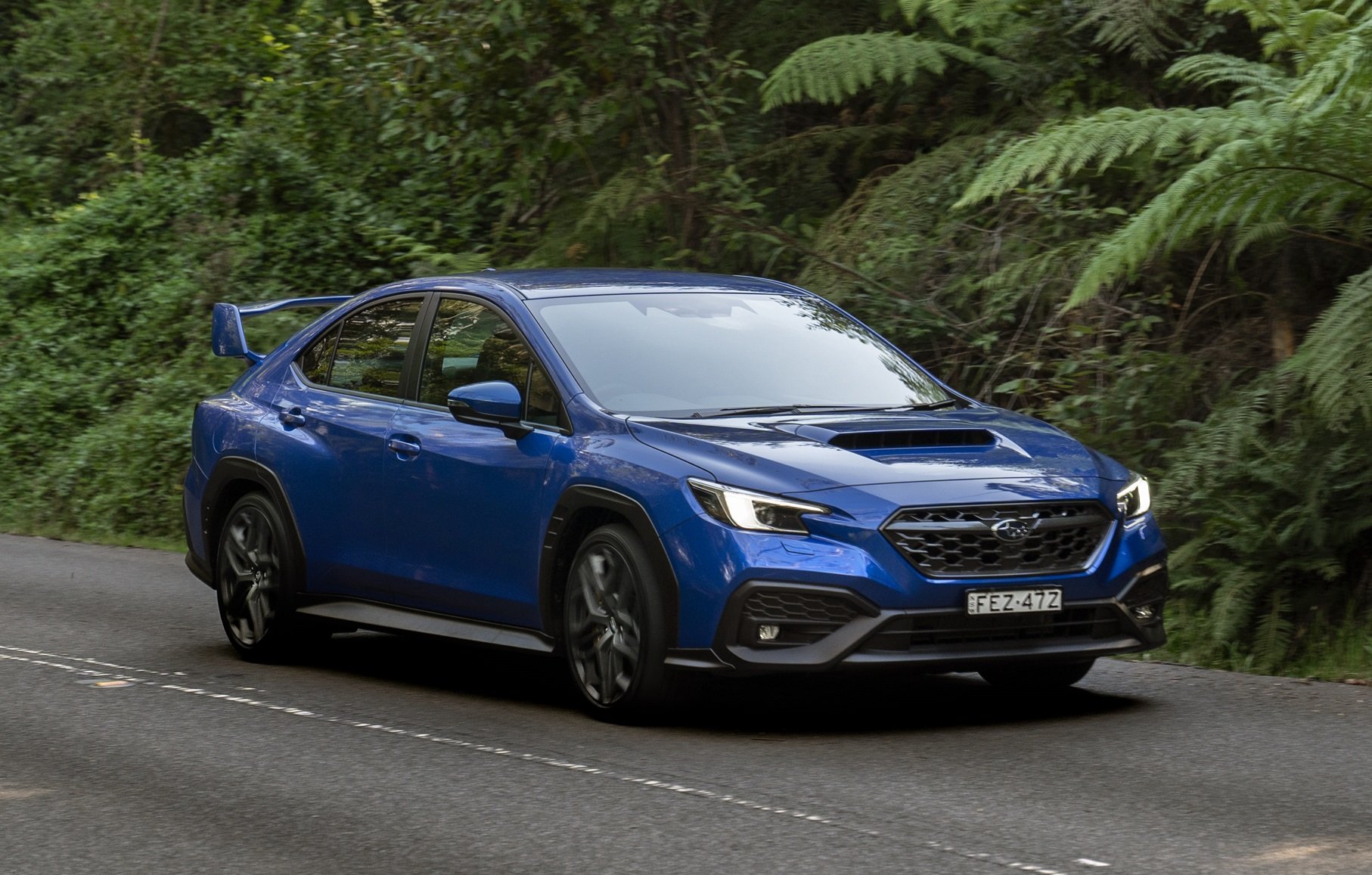
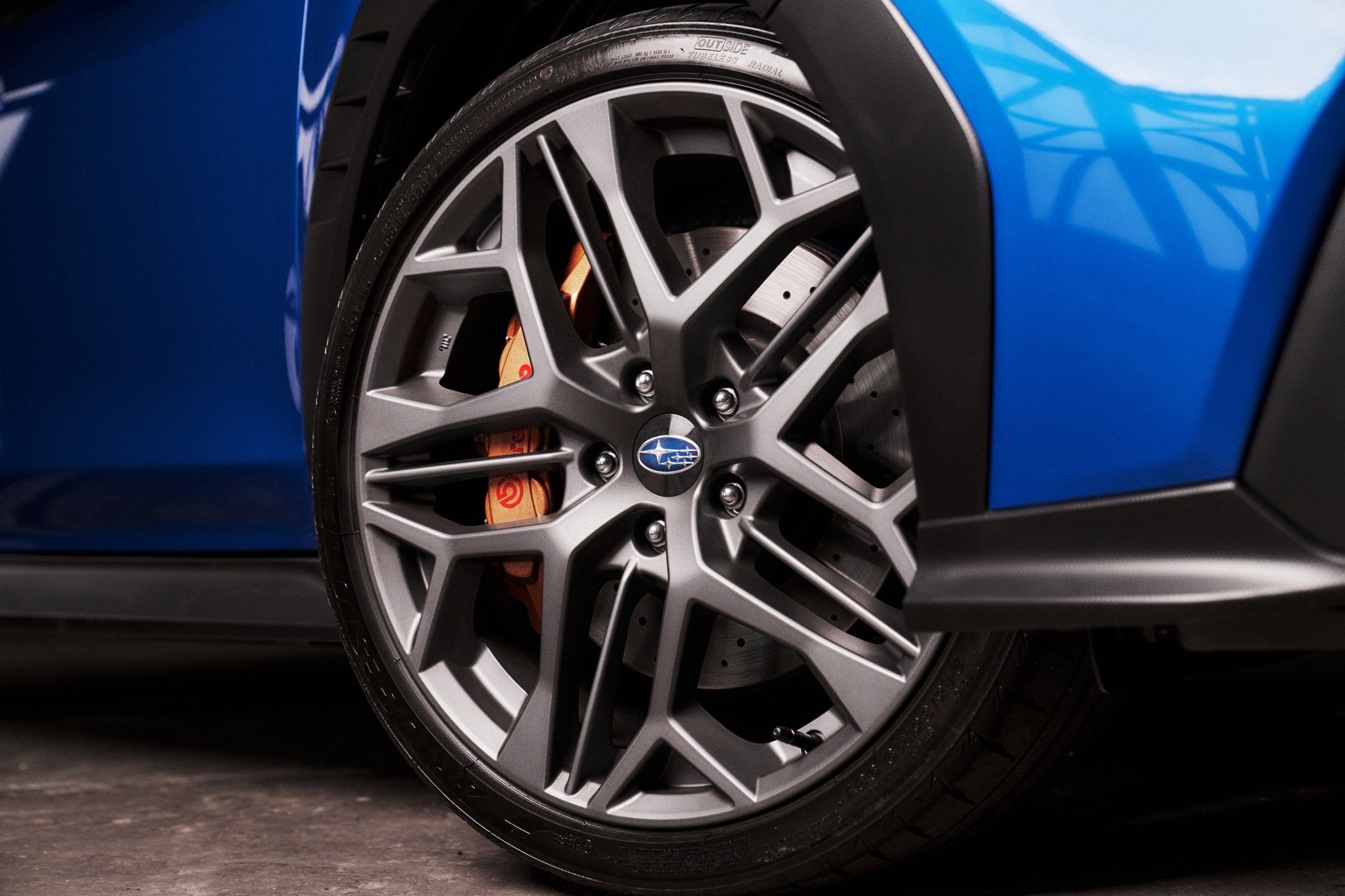
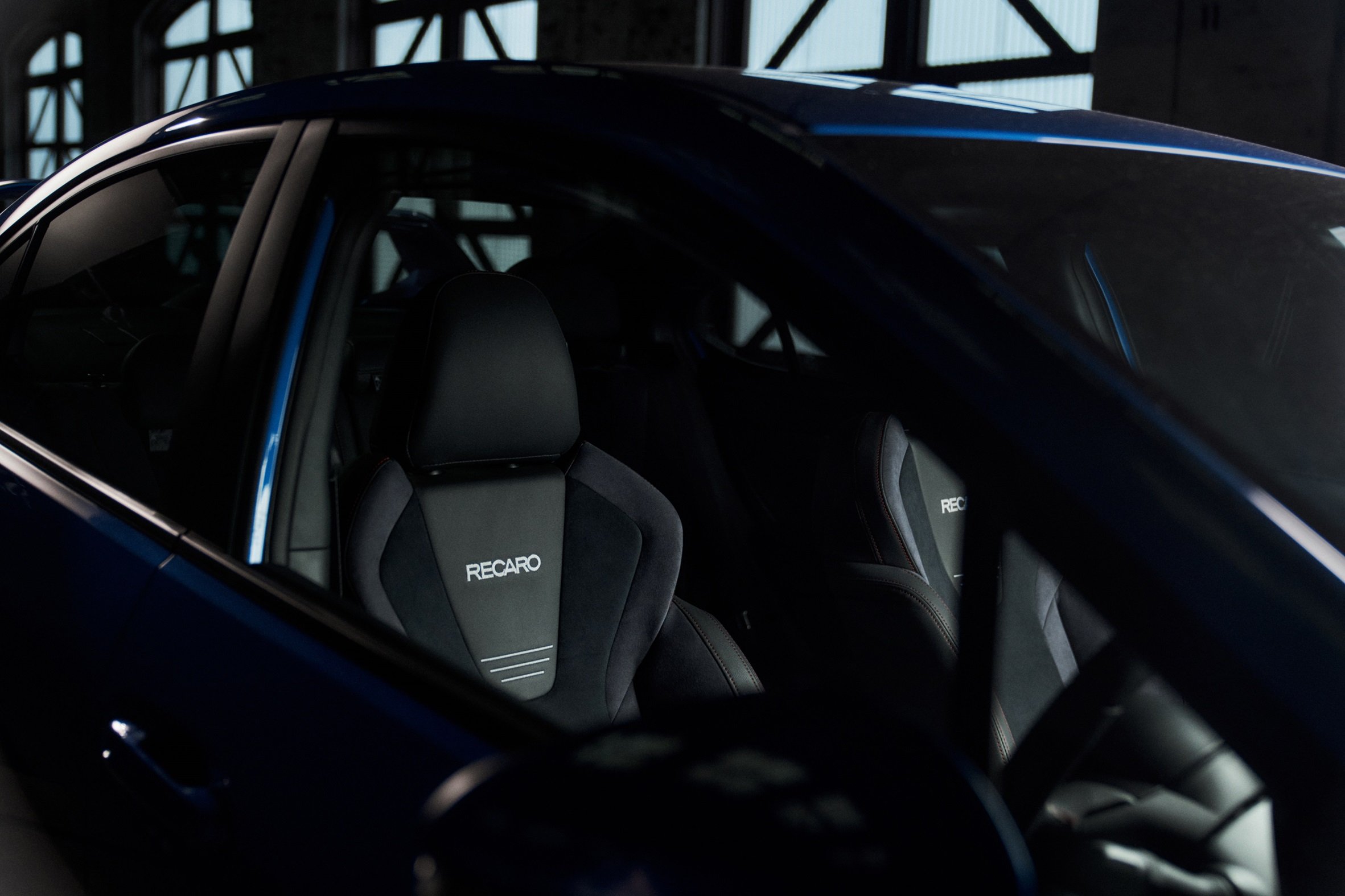
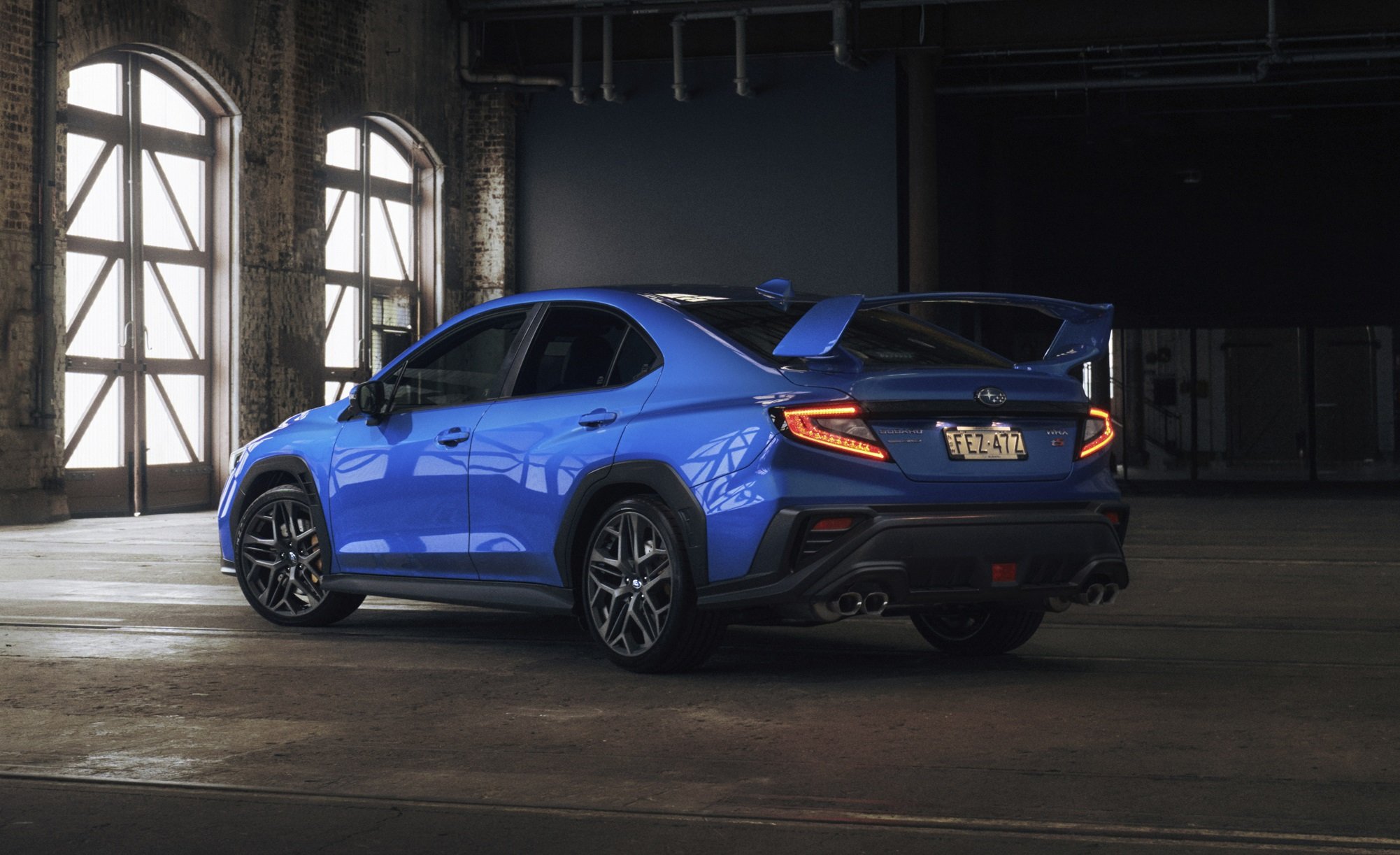
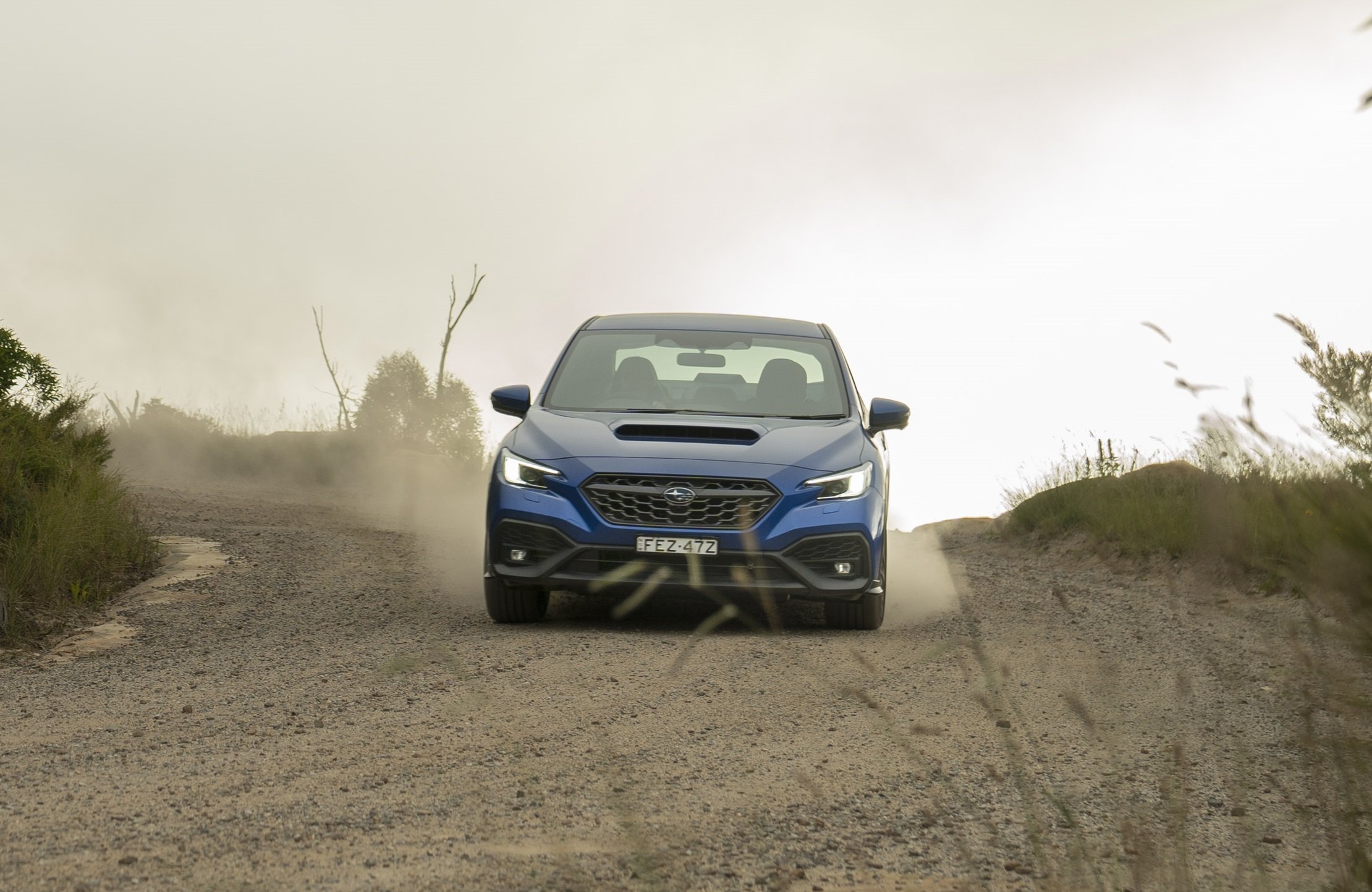





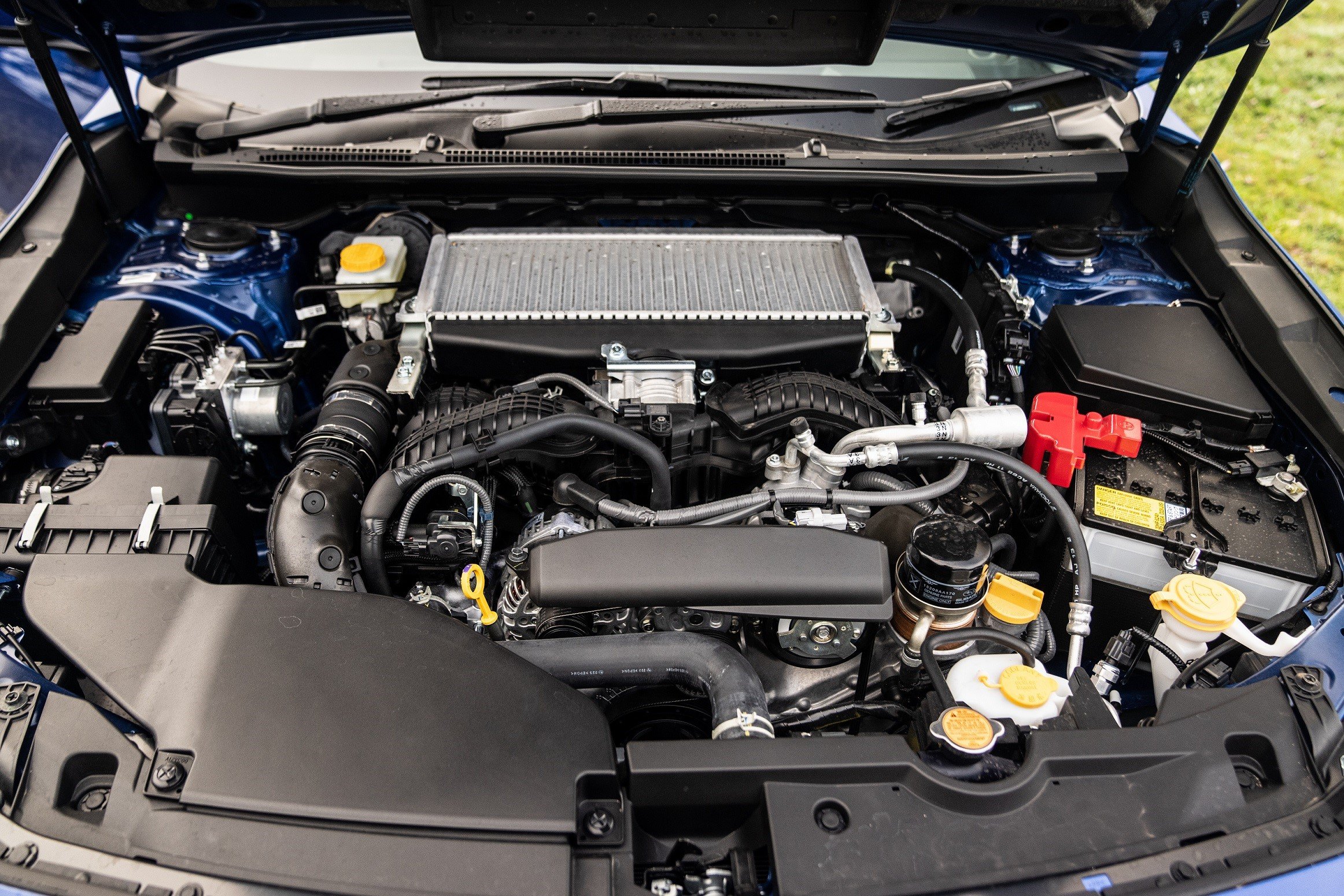
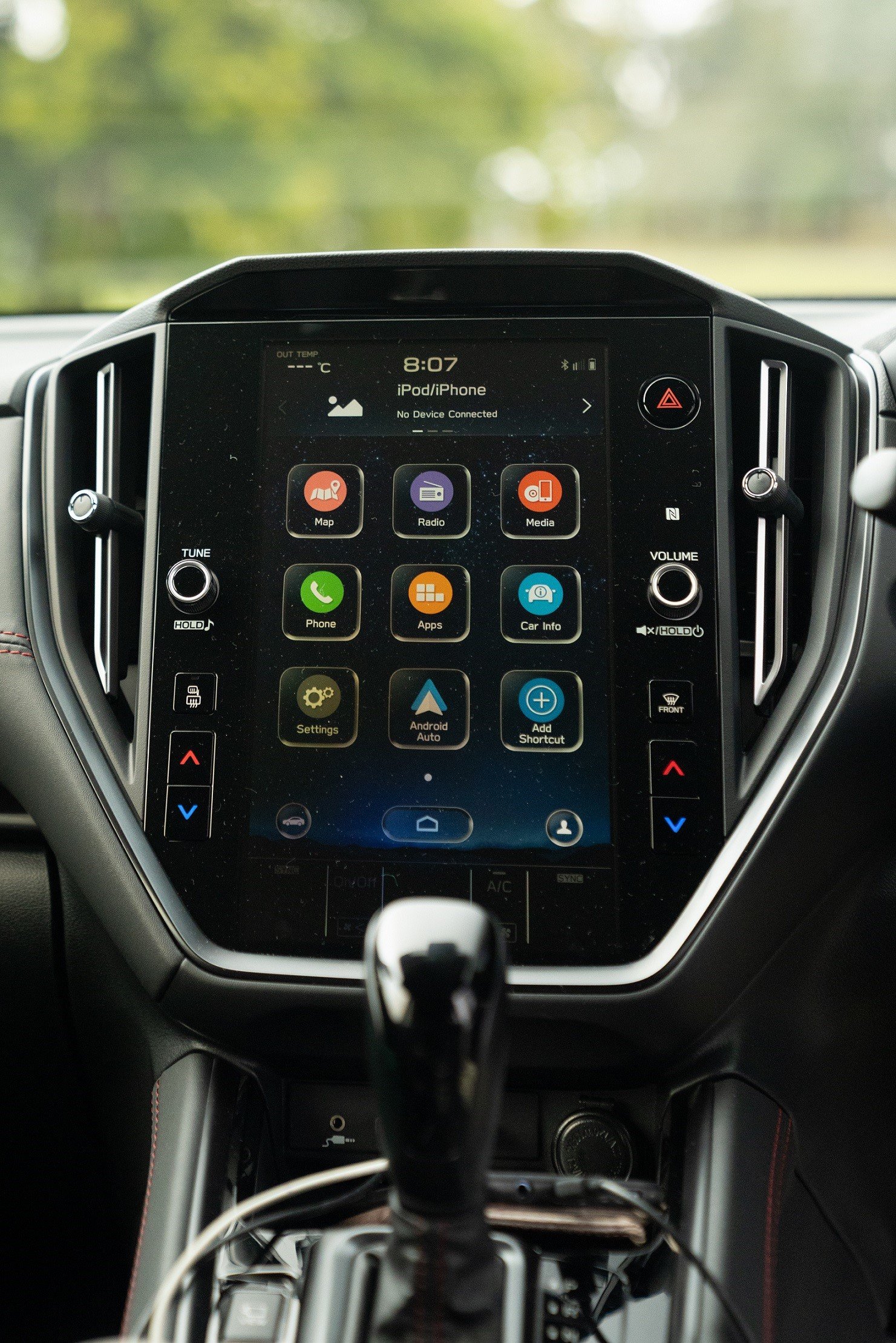
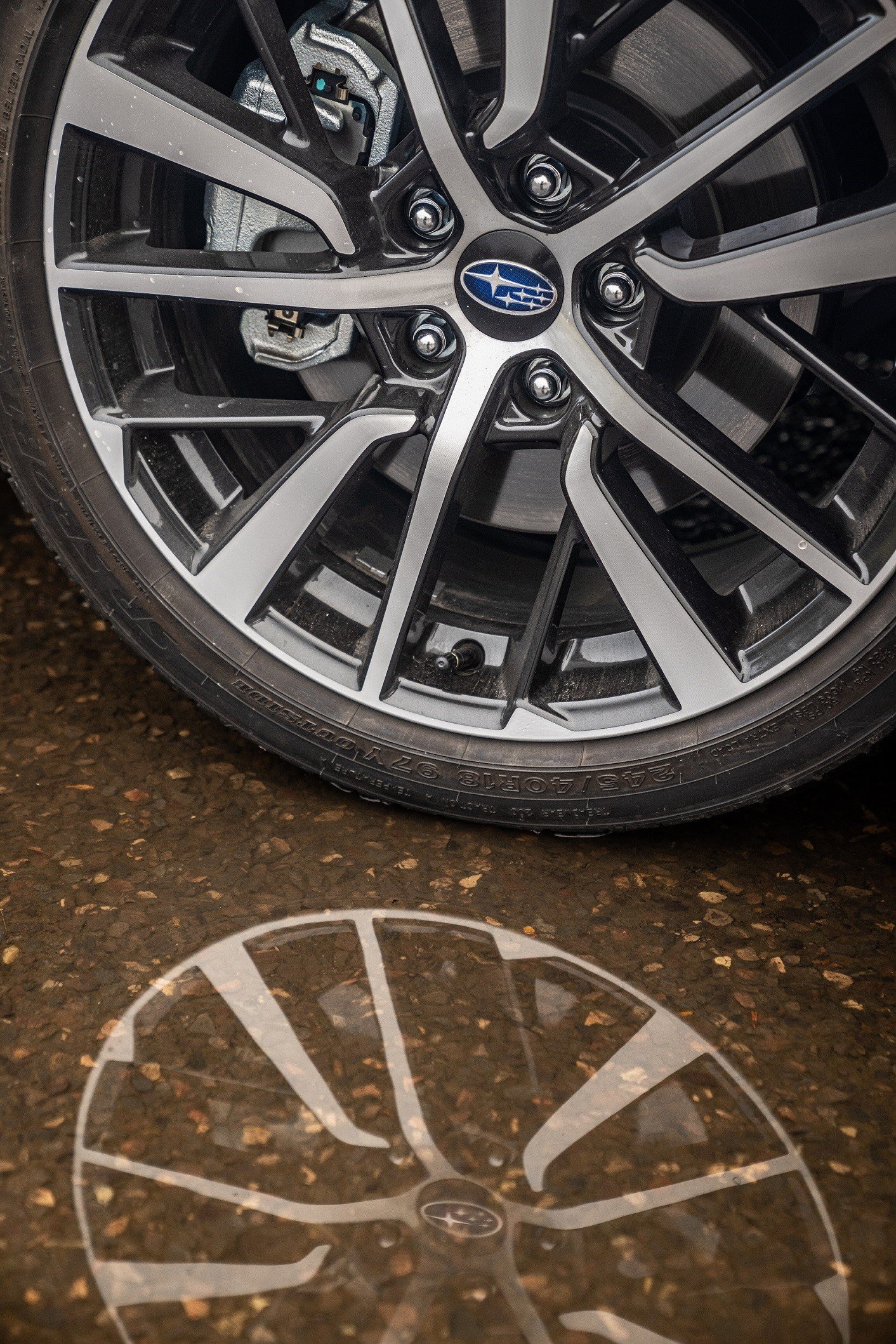
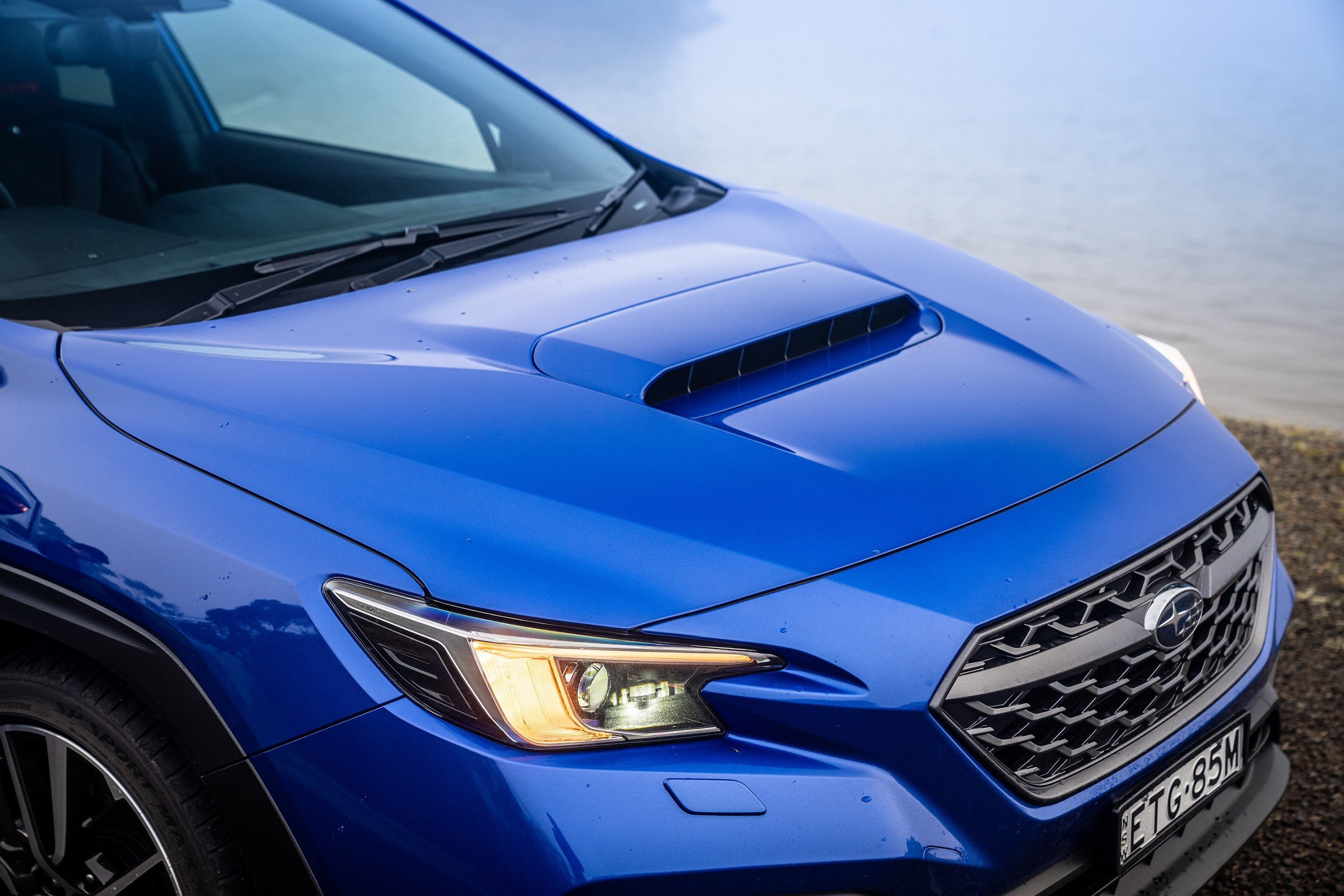



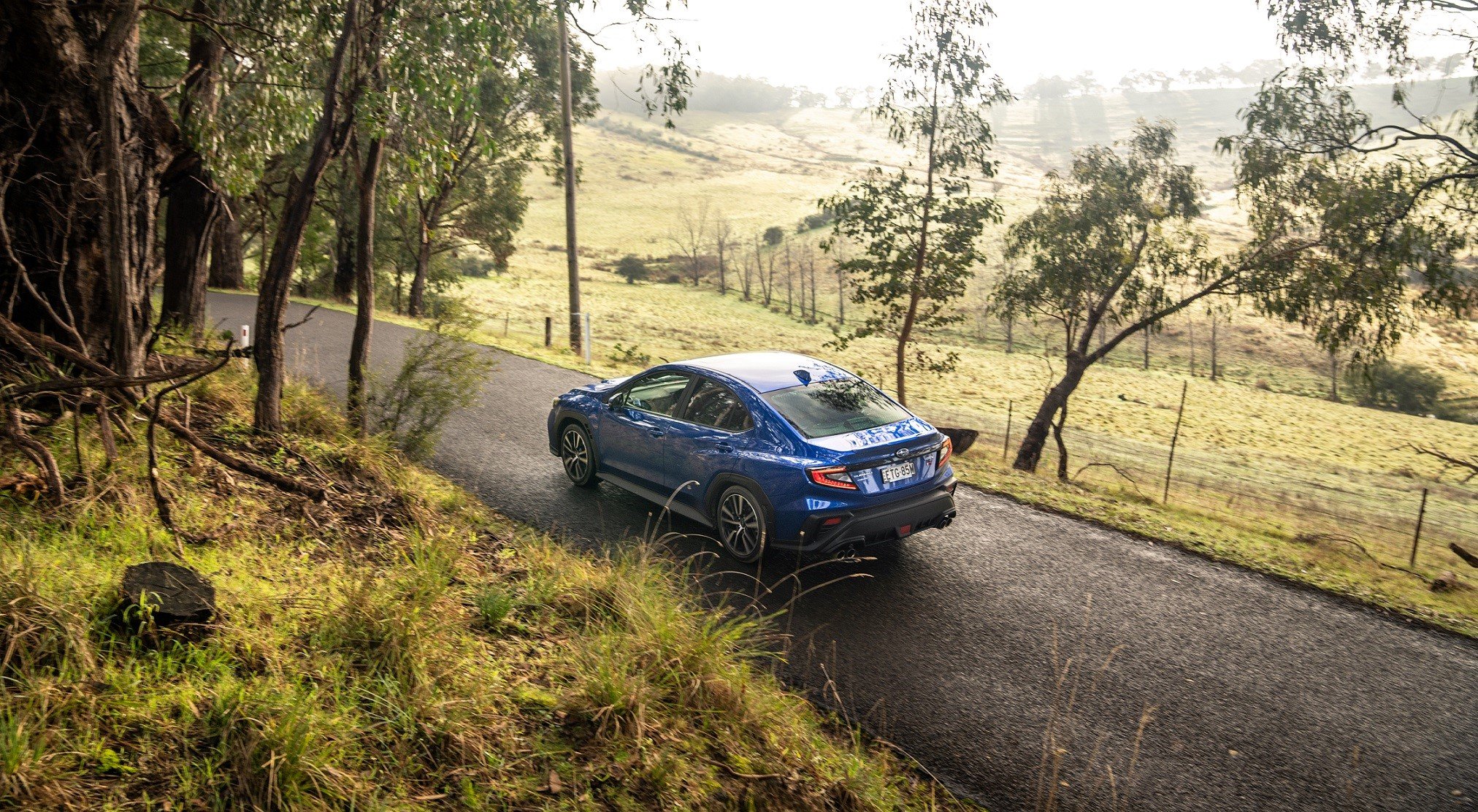
















The MG ZS is a small SUV that offers such strong value to most buyers that it should be on your shortlist be default, even when shopping for a used car. But given that no car is perfect, the price could easily distract from its drawbacks.